
Бесплатный фрагмент - Personal Life Digital Management Framework. Proactive Human
ТABLE OF CONTENTS
PREFACE
CHAPTER 1. BASIC TYPICAL PERSONAL GOALS
CHAPTER 2. MAPPING OF THE MAIN PERSONAL GOALS AND PROCESSES
CHAPTER 3. EXAMPLES OF FRAMEWORK USAGE
CHAPTER 4. PERSONAL LIFE DIGITAL MANAGEMENT PROCESSES
1) My Planning
2) My Spiritual Realm
3) My Politics and Public Services
4) Health Management
5) Relationship Management
6) Hobbies
7) Learning Management
8) My Job
9) My Business
10) My Finances
11) My Acquisitions
12) Nutrition Management
13) Home Processes
14) Movement and Transportation Management
15) My Visits
16) Effectiveness Assessment
CONCLUSION
THE AUTHOR AND COPYRIGHT HOLDERS OF THIS DOCUMENT
Copyright © 2024 Aslanbek Daltayev, SYM Technology, LLP. All rights reserved. The protection applies to this document and its versions with translation into any language. Internet materials were used for part of the document.
Author: Aslanbek Daltayev.
Disclaimer: Personal Life Digital Management Framework Proactive Human (hereinafter referred to as “Proactive Human”) is a reference to experimental research and a hypothetical description of digital processes for managing the personal life of an abstract person. It represents the subjective vision of the author and copyright holders aimed at assisting organizations in the design and development of software applications. Organizations and individuals should not interpret or apply Proactive Human (or any part thereof) as a call to action, a guide, or an instruction for behavior in their professional or personal practices. Any actions or decisions based on Proactive Human are taken at the user’s own risk. The author and copyright holders assume no responsibility for any damage arising from the use, incompleteness, inaccuracy, or inapplicability of the information provided. By continuing to view one or more pages of this document, the reader, owner of this copy, or organization confirms their agreement with the terms of this disclaimer. If you disagree with these terms, you must cease viewing or studying this document immediately.
PREFACE
The Proactive Human high-level framework is the result of a product study testing the possibility of obtaining a document that would describe potential, typical, holistic, and unified management, activity and operations of individual’s personal life in automated and/or automatic modes. Proactive Human, due to a hypothetical and experimental version of the display and description of processes and their relationships, can be useful for teams working on the design and improvement of SuperApps, Metaverses, Big Data projects, AI, integrated interaction of specific applications, services, and devices of the Internet of Things. Proactive Human is not about technical means or automation tools, but about the logic and structure of the functioning of programs at the level of user data and applications. The framework can also be useful for specialists from other fields, such as life coaches, life managers, and the average person.
The next immediate goal of the Proactive Human development project is to distribute it as an e-book and to post it on a dedicated web portal that facilitates public discussion and allows registered users — or members of the future association — to collectively submit proposals and changes.
The concept of personal life management is central to this document. In developing the framework, our team sought to determine whether it is possible to elevate the management of one’s personal life or activities to a new level. What might that level be? What role does information technology play in this evolution?
It is likely that the number of companies developing digital solutions for personal use will grow, as they strive — consciously or unconsciously, together or independently — to obtain automated services that maximize the range of operations covered, ensure their aggregation and improved integration, and support holistic, unified implementation and management.
It is highly plausible that the market will see an increasing number of solutions designed to help individuals anticipate the desired state of their lives and prepare for significant challenges and threats. In particular, this growth may be driven by the advanced, user-friendly functionality of these applications and by a growing desire for balance and optimization across various dimensions — such as benefits, risks, resources, time, work-life balance, and overall harmony.
What is wrong with the life management of a modern person, given the potential offered by modern digital technologies? The average offline lifestyle, a conventional (run-of-the-mill) life management application, or even a modern SuperApp do not adequately address (or only weakly address) the following problems and shortcomings:
— “Short-sightedness” and a narrow vision of life and the surrounding world.
— A sense of existential confusion, inner turmoil, and inconsistency in the search for answers and one’s purpose. This adversely affects long-term planning or even leads to its absence.
— Limited ability to track the mutual influence of various aspects of life. Existing tools do not allow for a comprehensive analysis of how one factor impacts another.
— A reality that regularly delivers unexpected and unpleasant surprises. Current personal Apps do not ensure sufficient predictability in life’s processes.
— Living in a “firefighting” and/or chaotic manner rather than in an orderly, strategic way. People are forced to act reactively instead of adopting a proactive, strategic approach.
— Insufficient coordination with other people and organizations. Frequent communication breakdowns result in conflicts and inefficient interactions.
— A lack of comprehensive, user-friendly, attractive, and truly useful tools for centralized life management. Existing solutions are often so cumbersome that they are outright rejected by users.
— Fragmentation of activities. Elements of life management are scattered across different applications, which makes their integration and use within a unified framework difficult.
By developing and promoting Proactive Human, we aim to help organizations obtain more advanced solutions with the following advantages, among others:
— “Life In Full View”. Users effortlessly access information on hundreds of key elements of their own processes and tasks — as well as those of related processes — and understand their interrelationships across the past, present, desired state, and forecasted future, all presented in a variety of alternative potential scenarios.
— Life or activity management based on Benefit-to-Cost/Effort Analysis. This approach not only offers alternative solutions but also optimizes the necessary and potential aggregate of benefit units while taking expenses, efforts, and risks into account.
— Standardized and evolving processes and objects in personal life. The logic and structure of these processes are supplied by a global social network of authoritative experts, institutions, and experienced users.
— Approaches to managing personal activity derived from professional business management. These methods are implemented with a focus on the convenience and simplicity of software applications for the average user, considering the natural characteristics of individuals.
— Integration of popular third-party internet services, processes, and applications. Examples include mapping services, taxi applications, weather forecasts, and similar tools.
— An embedded inbound flow of statistical and risk information. Sourced from specialized providers, this data supports the planning of personal activities with risk considerations, thereby enhancing the likelihood of successfully achieving personal goals and objectives.
For the success of the design, development, and implementation of life-management applications or SuperApps, it is important to pay special attention to the common risks of the relevant projects:
— The product provides a lower-than-expected value for the user.
— Users’ unpreparedness for new approaches.
— Complexity and inconvenience for the user.
— User concerns about personal data leakage.
— Fear of Big Brother or All-Seeing Eye.
— Rejection by those who are not fond of planning and time management.
— Criticism or ignoring by adherents of Internet detox.
— Insufficient supply of structures, knowledge, and information from external parties, and ineffective engagement of third-party applications.
— Insufficient productivity or efficiency of the project team relative to the intensity and volume of both incoming information and its own set of core elements — structures, knowledge, and computational algorithms.
— Inefficient product architecture, leading to complexity and high costs in implementation, operation, and support.
Proactive Human is not a panacea for a person’s personal problems. Although new methods can yield significant benefits, personal awareness, prudence, rationality, and adequacy should always remain the most essential criteria for any practical approach. Moreover, we do not recommend applying this framework to societies and countries with relatively unstable environments — those torn apart by conflicts, economic crises, and other disruptions. Proactive Human does not focus on personal crisis management and is not intended for that purpose. Crisis management is not distinguished as a separate process, although individual elements of it are present in various processes and are proposed as components of a proactive approach.
Sincerely, the Proactive Human team.
CHAPTER 1. BASIC TYPICAL PERSONAL GOALS
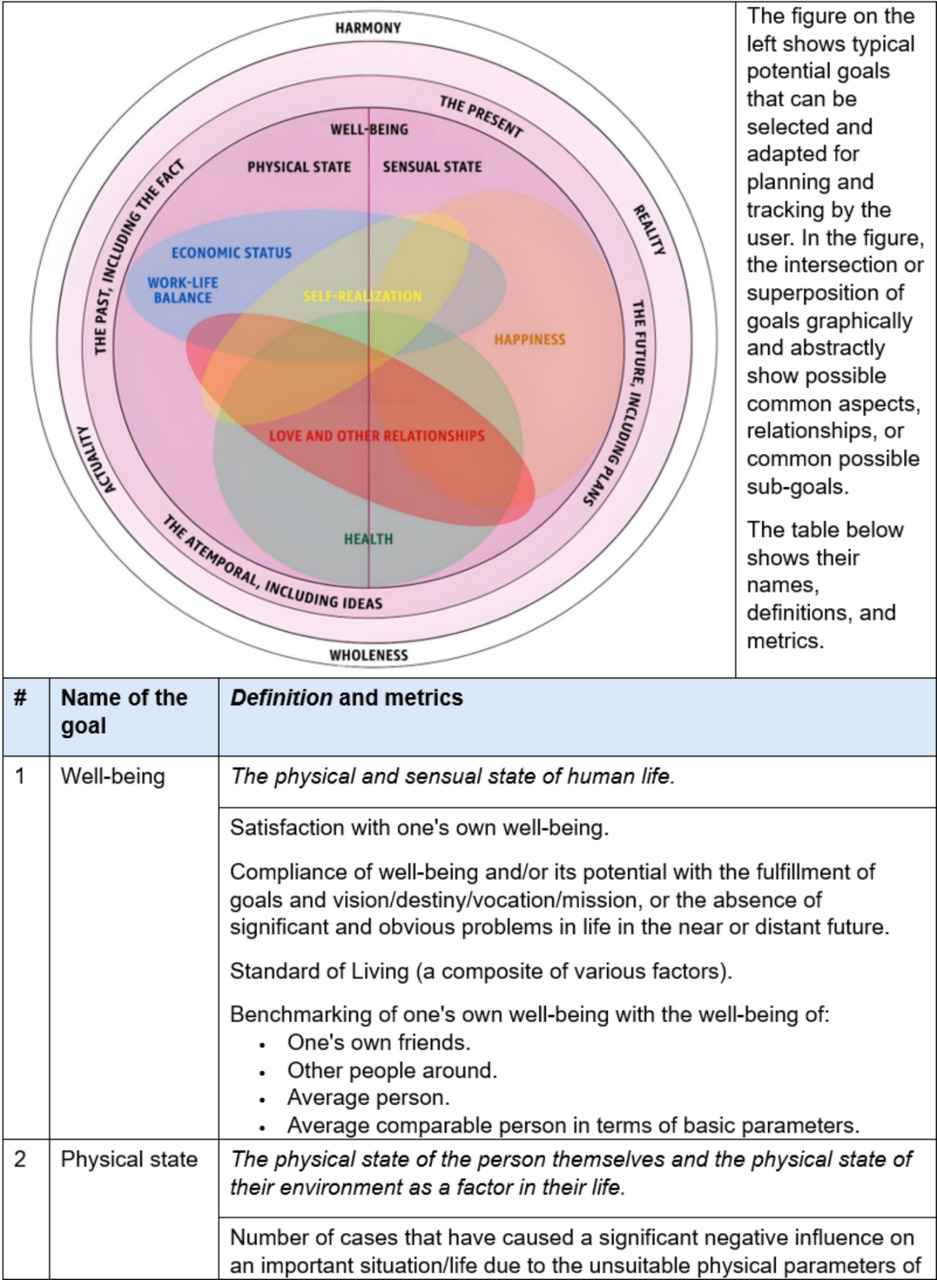
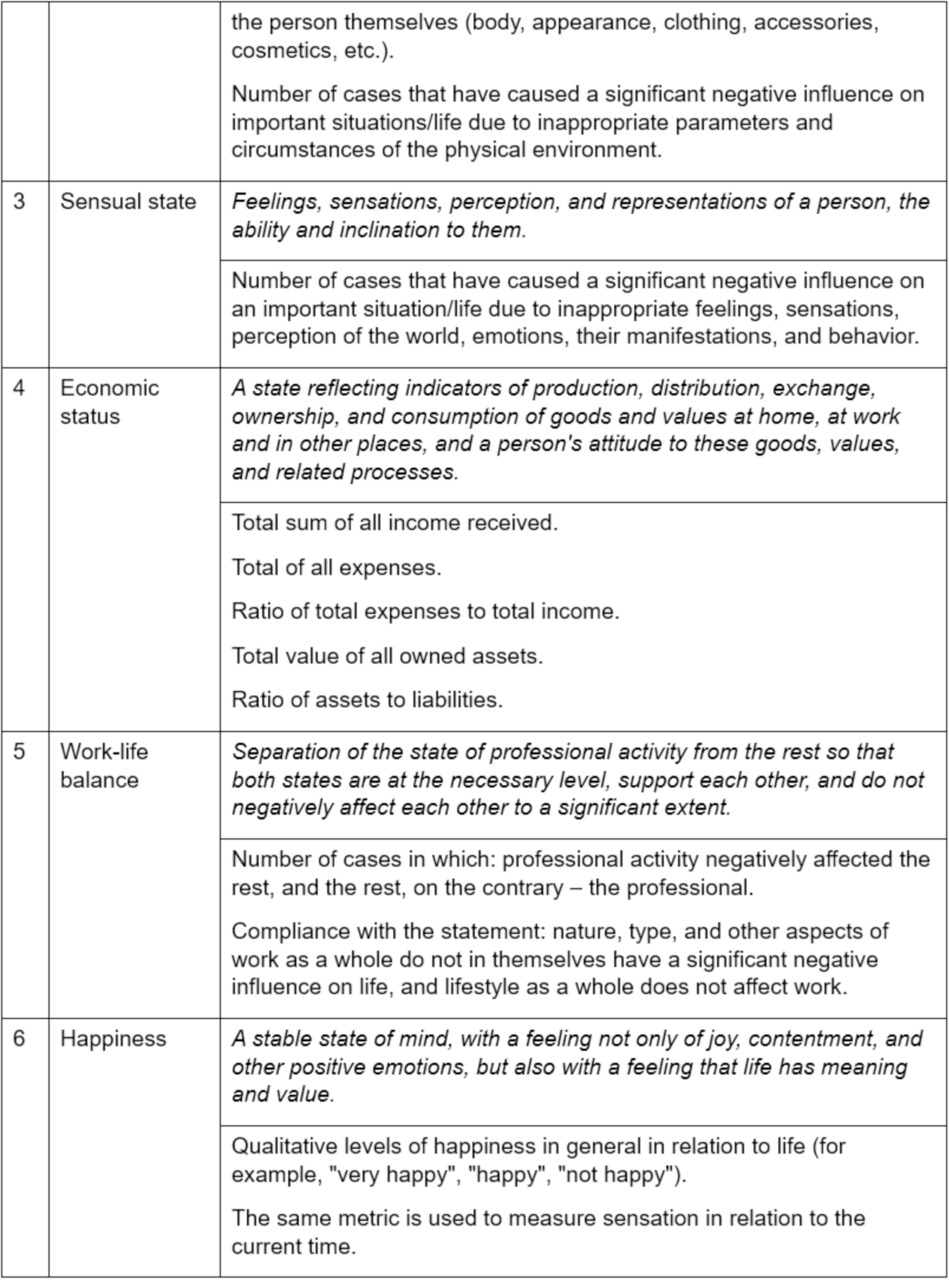
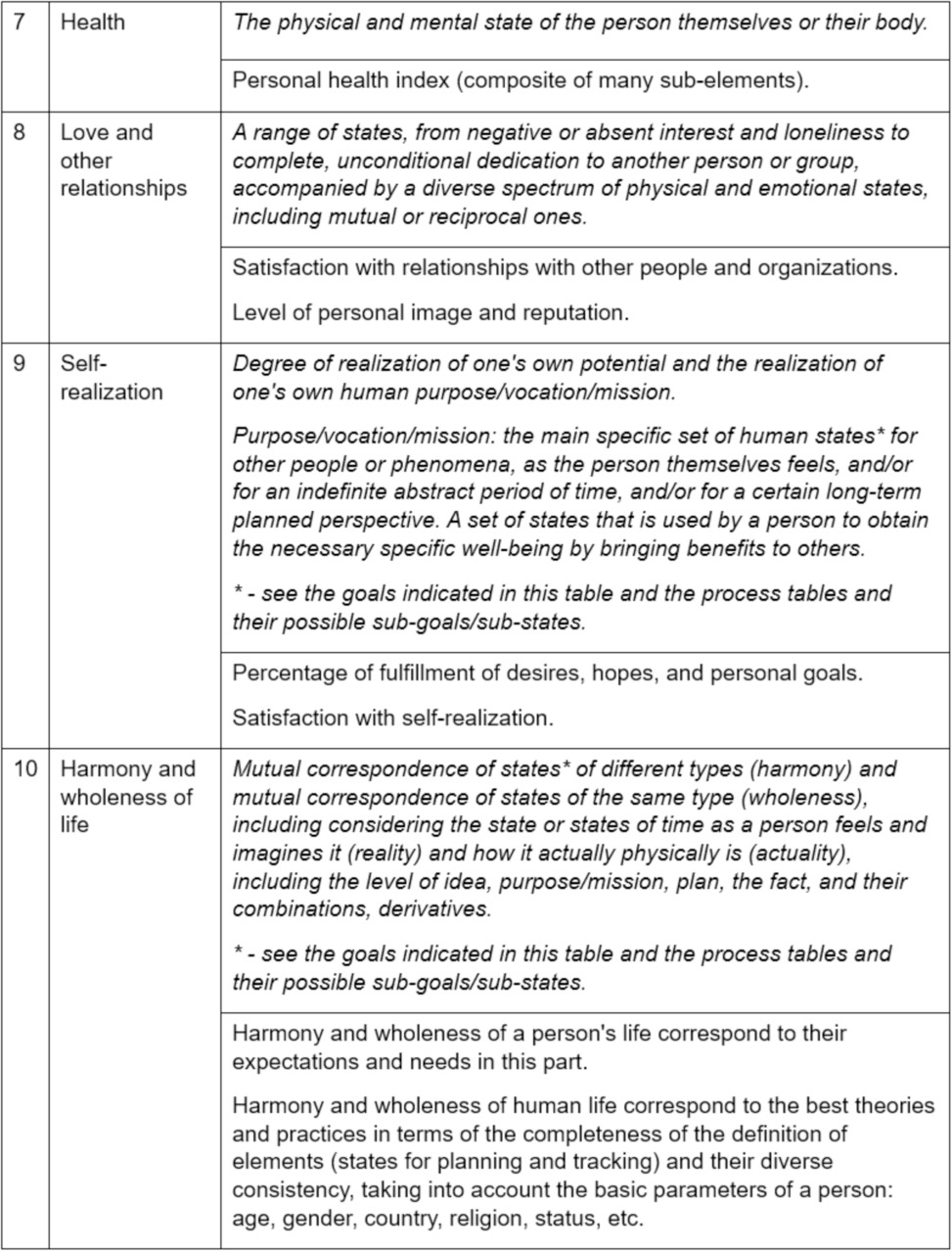
CHAPTER 2. MAPPING OF THE MAIN TYPICAL PERSONAL GOALS AND PROCESSES
The Proactive Human framework outlines the following 16 processes for the digital management of personal life.
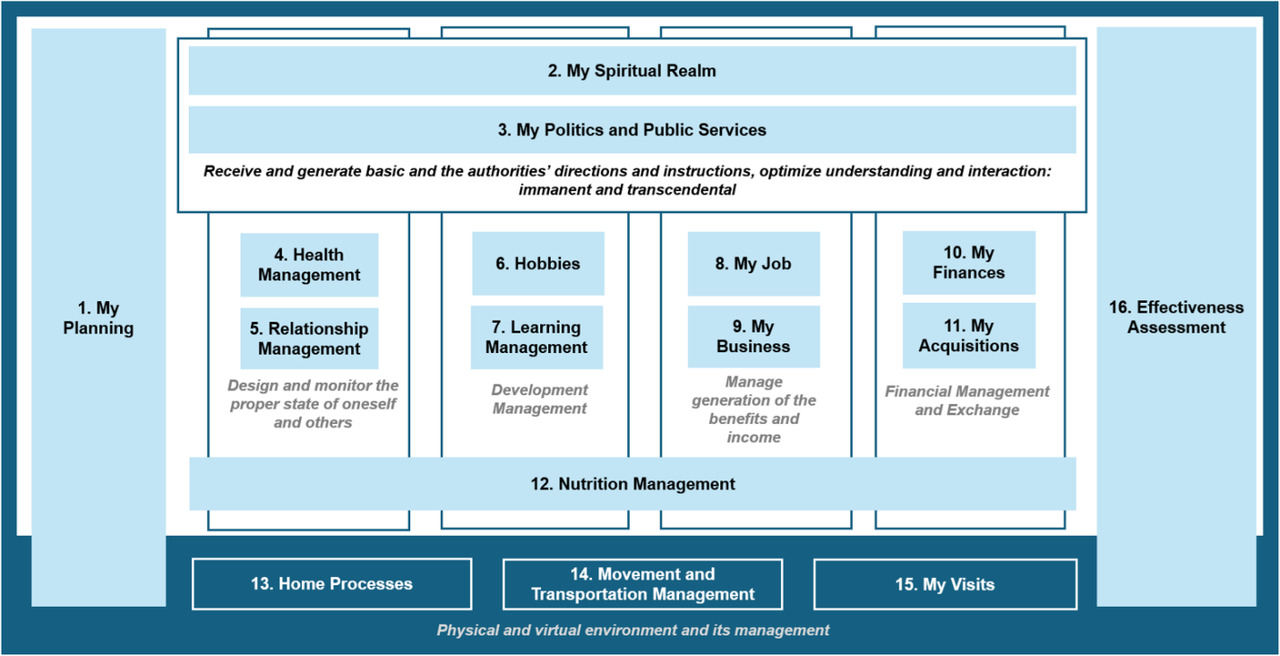
Each of these processes affects the main typical personal goals. It is assumed that to positively influence these goals, appropriate changes and achievements can be made in terms of process goals and indicators, as well as in the quality and development of the processes themselves or their elements.
The following table shows the influence of processes on achieving goals: “P” — primary impact, “S” — secondary or additional impact, if empty — missing or relatively rare.
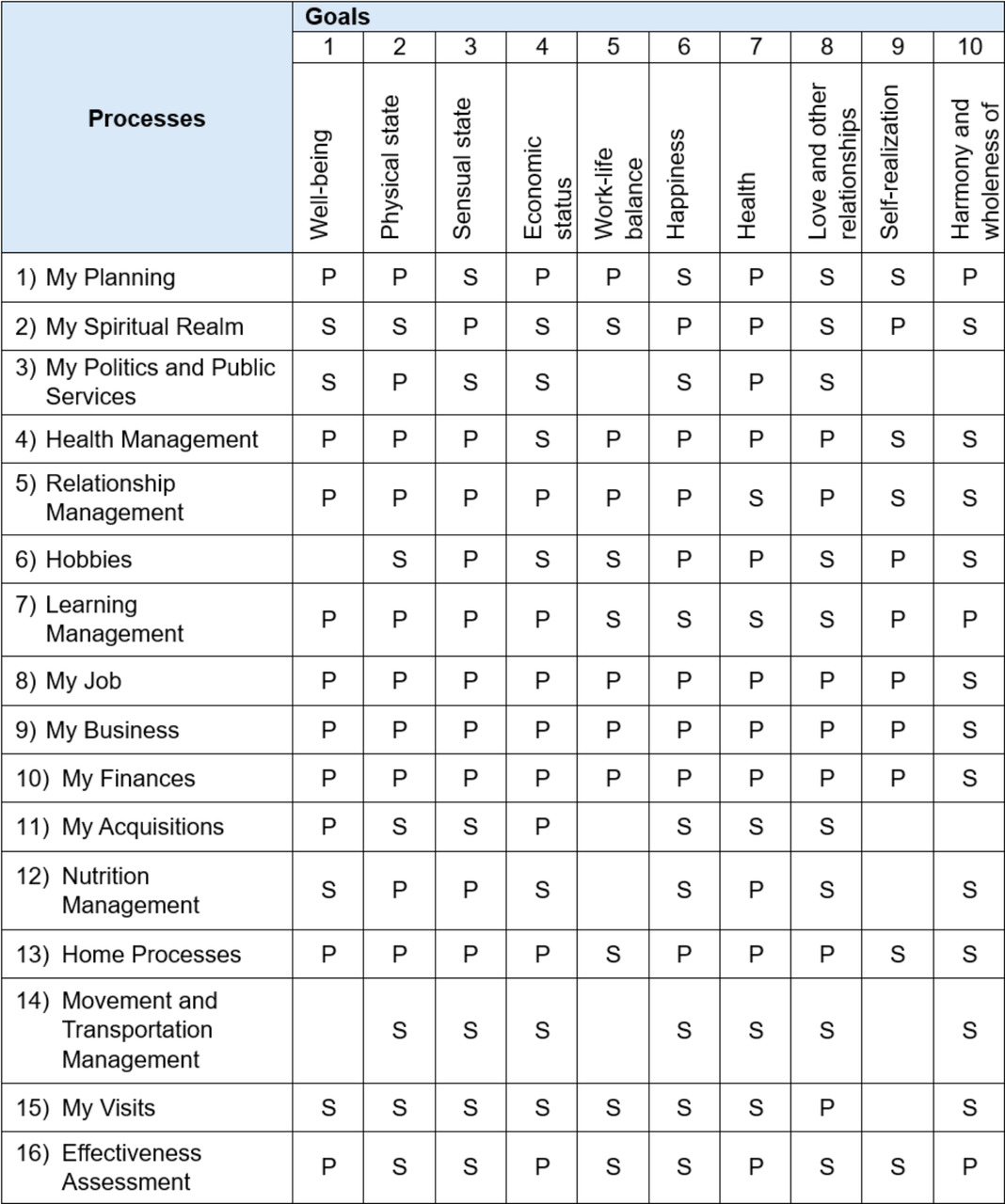
CHAPTER 3. EXAMPLES OF FRAMEWORK USAGE
Example 1: Next-Generation SuperApp Project
Situation
An IT corporation specializing in the development of visionary software products is designing a next generation SuperApp. The functionality of this SuperApp covers key processes of personal life management and core operations of human life activities.
The first iteration of requirements gathering and product structuring has been completed. However, after analyzing the obtained structure, the project manager does not have sufficient confidence that:
— The product will meet the minimum value requirement for an average user.
— It includes a sufficiently comprehensive list of user services and ensures their efficient interaction.
Together with the team, the manager develops risk mitigation strategies, including:
— Testing hypotheses on a user focus group.
— Engaging experts in key areas of life management.
— Conducting analysis using a chatbot powered by generative artificial intelligence.
— Applying the MVP (Minimum Viable Product) approach.
— And exploring other possible solutions.
However, after analyzing each approach individually and in combination, the team concludes that none of the proposed methods ensure the required speed and reliability in solving the problem within the approved timelines and quality parameters of the project.
Using the Proactive Human Framework as an Express Tool for Reducing Time and Quality Risks
The project manager can use the framework as an express tool that allows for rapid, systematic, and comprehensive formation of the SuperApp structure, thereby reducing risks in terms of time and quality.
Key Principles of the Express Method:
— Structural Integrity. The framework already contains a logically complete model of personal life, eliminating gaps and duplication in the SuperApp services.
— Speed. Instead of lengthy research and fragmented data collection, the team receives a ready-to-use foundation that can be adapted.
— Comprehensiveness. The framework provides holistic coverage of life processes, ensuring the completeness of the product.
— Optimization of Service Interactions. A clear structure of inputs/outputs from processes helps avoid chaotic service linking and improves UX quality.
— Identifying Usefulness. By leveraging high-level goals and process metrics, unnecessary functions can be eliminated, focusing only on truly valuable features.
Step 1. Rapid Development of the SuperApp Structure
Extract the key processes of personal life management from the framework and group them into SuperApp services. Result: a complete list of user services that cover all essential aspects of life.
Step 2. In-Depth Detailing of Services
Break down each service into processes, operations, and activities using the framework’s level of detail. Additionally, each low-level operation or activity is further decomposed using a generative AI-powered chatbot. Result: the manager obtains a detailed structure of services, including modules and their functionalities.
Step 3. Defining Interactions Between Services
Analyze inputs and outputs of processes in the framework to understand how services should exchange data and interact. The project analyst requests AI to reveal the data structure for each input/output, considering source processes and operations, destination processes and operations, and goals of these processes. Result: optimized logic of service interactions.
Step 4. Rapid Identification of Product Usefulness
Use the high-level and process-specific goals of the framework to determine how useful each service is for users. Result: unnecessary features are eliminated, with a focus on truly valuable functionality.
Step 5. High-Precision Finalization of Requirements
Develop detailed requirements based on the finalized structure, leveraging AI for further precision. Result: a comprehensive document covering all functional and user requirements for SuperApp.
Final Outcome: Fast and High-Quality SuperApp Structure Creation
By using the framework as an express tool, the manager:
— Rapidly obtains a complete and structured product architecture.
— Minimizes the risk of missing important services and functionalities.
— Optimizes service interactions, reducing development complexity.
— Enhances the product’s user value, eliminating redundant functions.
— Forms clear requirements, accelerating development and reducing errors.
The framework transforms into a powerful tool for accelerated structure and requirement generation, eliminating chaos and increasing planning accuracy.
Example 2. Online Retail Big Data
Situation
A well-known online retailer has initiated a project to optimize its product assortment and personalize consumer offerings. This initiative is expected to significantly increase revenue and improve the alignment of products with customer needs. The project includes the following key directions:
— Enhancing catalog display.
— Modifying the assortment and category structure.
— Applying the Unit of Need concept.
— Utilizing ABC analysis and demand analysis methods.
— Implementing additional tools for optimizing product selection.
One of the strategically important directions of the project is developing partnerships with popular online services and organizations from various industries. The integration and joint analysis of data will allow the identification and clustering of key factors influencing consumer demand. This, in turn, will improve the accuracy of personalized recommendations and enhance the overall quality of offerings.
However, the retailer faces a significant challenge: data from numerous and diverse online services and partners appear as a complex, opaque, and heterogeneous ecosystem — a kind of large Black Box. Understanding this ecosystem and identifying significant factors influencing consumer preferences and demand is the key objective of the project.
Proactive Human is based on the structure of human life, including key processes, goals, values, needs, and the inter- and intra-process information used. This systemic model can serve as a powerful tool for analyzing and interpreting the Black Box data, helping to identify factors that influence consumer decisions. Let’s explore how the retailer can use this framework.
1. Identifying Relevant Processes and Data in the Black Box
The framework describes personal life processes, while the Black Box contains data about people, their behavior, and their interactions with various services and organizations. To determine which Black Box data reveals factors influencing purchasing decisions, the retailer should:
— Match framework processes data with Black Box data — Identify which aspects of human life (according to the framework) are reflected in the behavior recorded in the Black Box.
— Determine key decision-making factors — Identify user characteristics (from the Black Box) that may indicate needs, values, and expectations related to purchases.
Which Black Box data can be useful?
— Personal characteristics (age, gender, marital status, income level) — These can influence the types of needs and consumption patterns.
— Behavioral data (search history, views, clicks, purchases) — These can indicate current needs and interests.
— Social connections (interactions with other people and organizations) — These can reveal the influence of the environment on purchasing decisions.
— Use of services and products (which apps and platforms are used, how often, and for what purpose) — These can indicate lifestyle preferences and tendencies toward certain types of consumption.
— Life events (job change, relocation) — These can alter a person’s needs, making them crucial for personalization strategies.
— Others.
Conclusion: The framework helps structure the chaotic data in the Black Box by linking them to personal life processes and their structural and interrelated elements, highlighting key decision-making triggers.
2. Analyzing the Connection Between Product and Service Processes and Personal Framework Processes
The Black Box contains data about people using products and services from online platforms and organizations across various industries. However, these products and services do not exist in isolation — they intersect with personal processes described in the framework.
Example of how service and organization processes intersect with personal life processes:
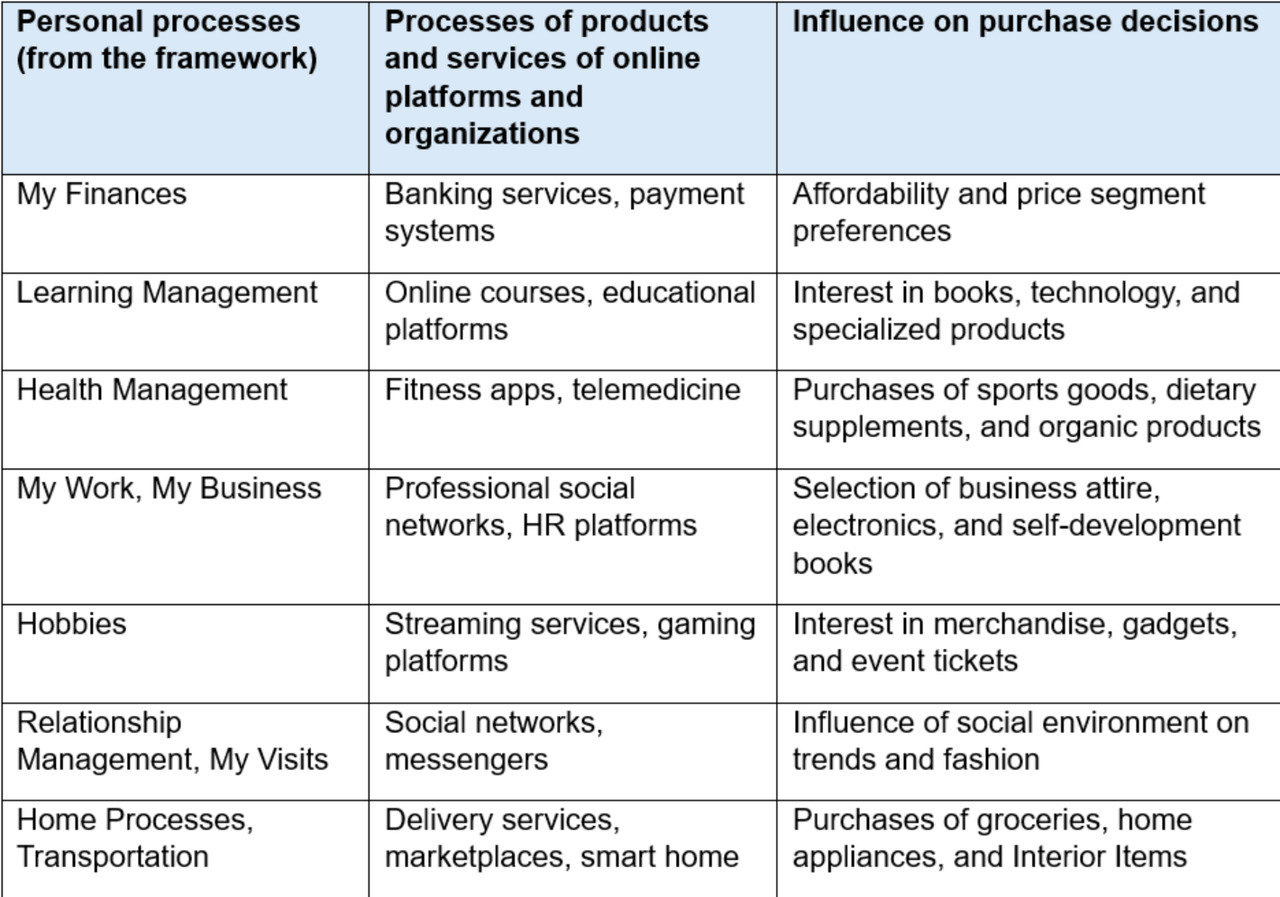
Conclusion: The framework enables the retailer to understand which life processes are connected to specific products and services. This allows for more accurate predictions of customer needs and better personalization of the offers.
3. Determining the Strength of the Connection Between Black Box Factors and Purchasing Decisions
The framework helps identify which data from the Black Box correlates most strongly with purchases. How can this be done?
1) Identify key variables. For example, users of fitness apps are more likely to buy sportswear. People interested in investments tend to purchase business literature and premium products.
2) Analyze the frequency and sequence of actions. How often do specific events (e.g., registration in a new service) lead to a purchase? How much time passes between interaction with a particular service and making a purchase?
3) Identify triggers and their impact. What life events (e.g., a new job, relocation) lead to changes in purchasing behavior? Which triggers (e.g., interactions with certain content) increase the likelihood of a purchase?
Conclusion: The framework helps the retailer move beyond analyzing chaotic data to find structured connections between a person’s life processes and their consumer decisions.
4. Developing a Personalization Strategy Based on the Framework
Using the framework, the retailer can:
· Segment customers based on personal processes rather than just traditional demographic parameters.
· Identify hidden needs by analyzing the intersection of life processes with consumer habits.
· Optimize recommendations by offering products in the context of real-life events.
· Build partnerships by engaging companies and services whose products intersect with specific life processes.
Final Conclusion
The personal life management framework enables the retailer to structure Black Box data, identify factors influencing purchases, understand the intersection of products and services with life processes, and determine the strength of the connection between user behavior and purchasing decisions. This approach goes beyond just analyzing demand — it allows for a deep understanding of customers, their needs, values, and life context, which becomes a key success factor in the era of personalized retail.
Example 3. The Student
Situation
A student accidentally notices an advertisement for a reputable local bank specializing in premium financial services, including Wealth Management. His attention is drawn to a special offer for VIP clients: among the extended services, personalized life management for the client’s family members is mentioned.
As part of this service, the bank provides a dedicated life manager who takes care of organizing key aspects of the client’s and their family’s lives — from financial and real estate management to travel planning, children’s education, and medical support.
This idea makes the student reflect: what if he assumes the role of a life manager in his own life? After all, successful people don’t just rely on circumstances — they consciously manage every aspect of their lives, from financial planning and career growth to personal effectiveness and adaptability to different situations.
He begins to think about what is essential to achieve his goals:
· Understanding key areas of life — finances, health, career, personal relationships, education, and self-development.
· Being prepared for various situations — the ability to analyze risks, make decisions, and manage resources.
· Striving for efficiency — setting goals, managing time effectively, and focusing on what truly matters.
This encounter with the advertisement becomes a moment of realization for him: to become successful, it is crucial not just to drift through life but to consciously manage it, just like people who already trust professional life managers.
Step 1. Getting Acquainted with the Framework Concept
The student reads a general description of the framework to understand its structure and principles. He realizes that life management is not a chaotic process but a well-organized system where every activity contributes to achieving broader goals.
Step 2. Identifying Key Life Processes
He explores the main processes that shape life: finances, career, health, self-development, relationships, leisure, and others. The student concludes that life consists of interconnected systems, each of which often requires management and analysis.
Step 3. Examining Operations and Activities Within Each Process
By analyzing the framework, the student sees that each process consists of specific operations and activities. For example, financial management includes budgeting, expense tracking, investments, and debt management. He understands that effective management requires addressing multiple components.
Step 4. Studying Input and Output Data
The student notices that the framework specifies input and output data for each activity. He concludes that life management is based on analyzing and controlling information.
Step 5. Analyzing Process Goals and Metrics
He examines the goals and metrics associated with each process. For instance, one of the goals in the health domain is maintaining energy and physical condition. The student realizes that without measurable goals, it is difficult to assess progress and the effectiveness of actions.
Step 6. Understanding the Connections Between Processes
The framework shows that life processes are closely interconnected. For example, career growth requires investment in self-development, maintaining good health, and managing finances wisely. He realizes that every decision in one area affects other aspects of life and starts viewing life management as a unified system.
Step 7. Building a Personal Life Management Strategy
Using the framework, the student develops a personal life management plan. He identifies key goals, plans specific actions, and sets metrics to track progress. Now he understands that success is not a result of random decisions but of a systematic approach.
Conclusion
Although the first version of his personal life management plan was predictably ineffective, the framework helped the student identify the reasons for his failures, adjust his approach, and continue building a structured life management system. Over time, he realized that life management is a process of continuous analysis and adaptation.
The framework not only made him reflect on managing his life but also helped him construct a comprehensive system in his mind. Through this system, he consciously sets goals, anticipates different situations, and mentally structures the management of all aspects of his life. Occasionally, he revisits the framework, refreshing his understanding and adjusting his approaches based on new circumstances and accumulated experience.
CHAPTER 4 PERSONAL LIFE DIGITAL MANAGEMENT PROCESSES

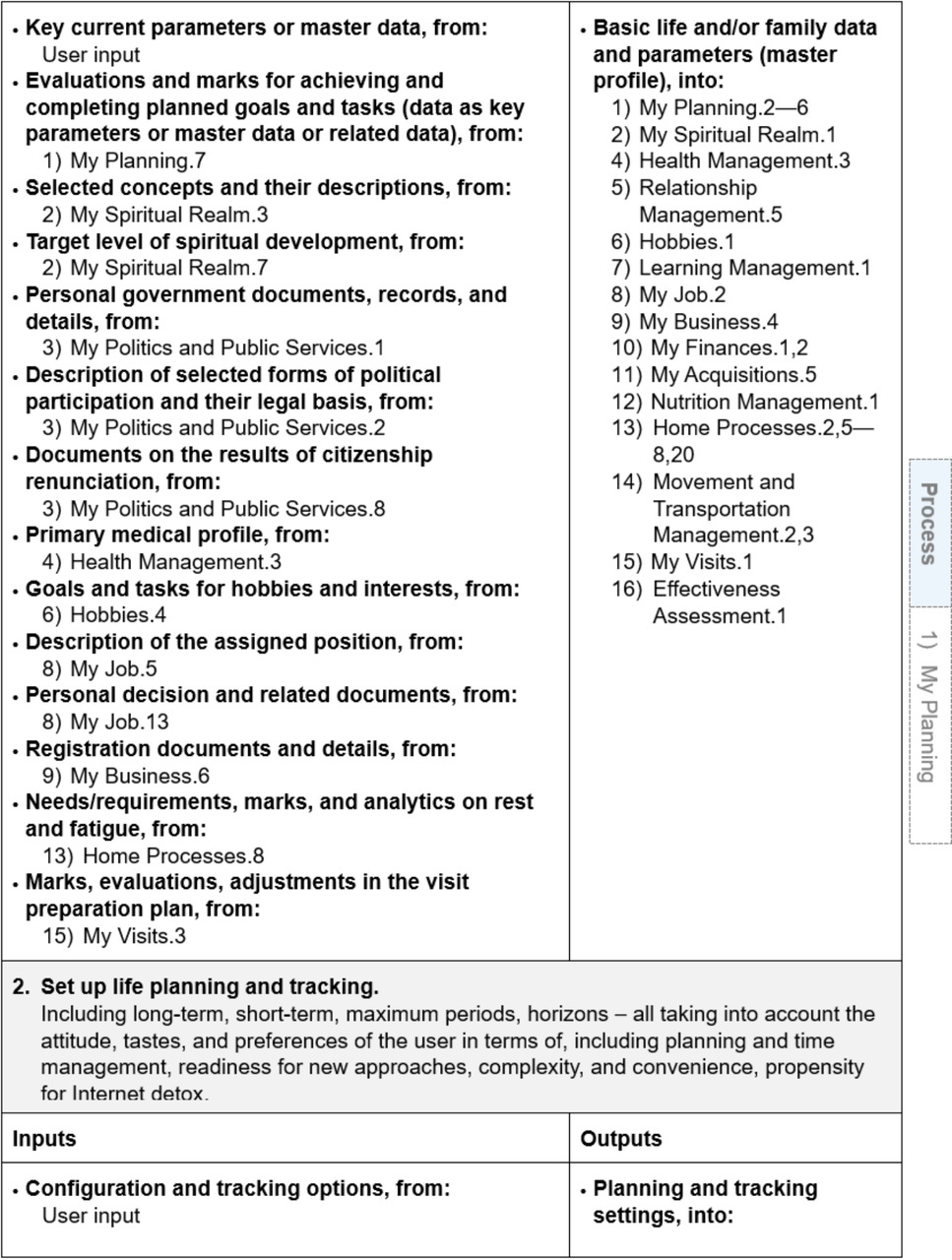
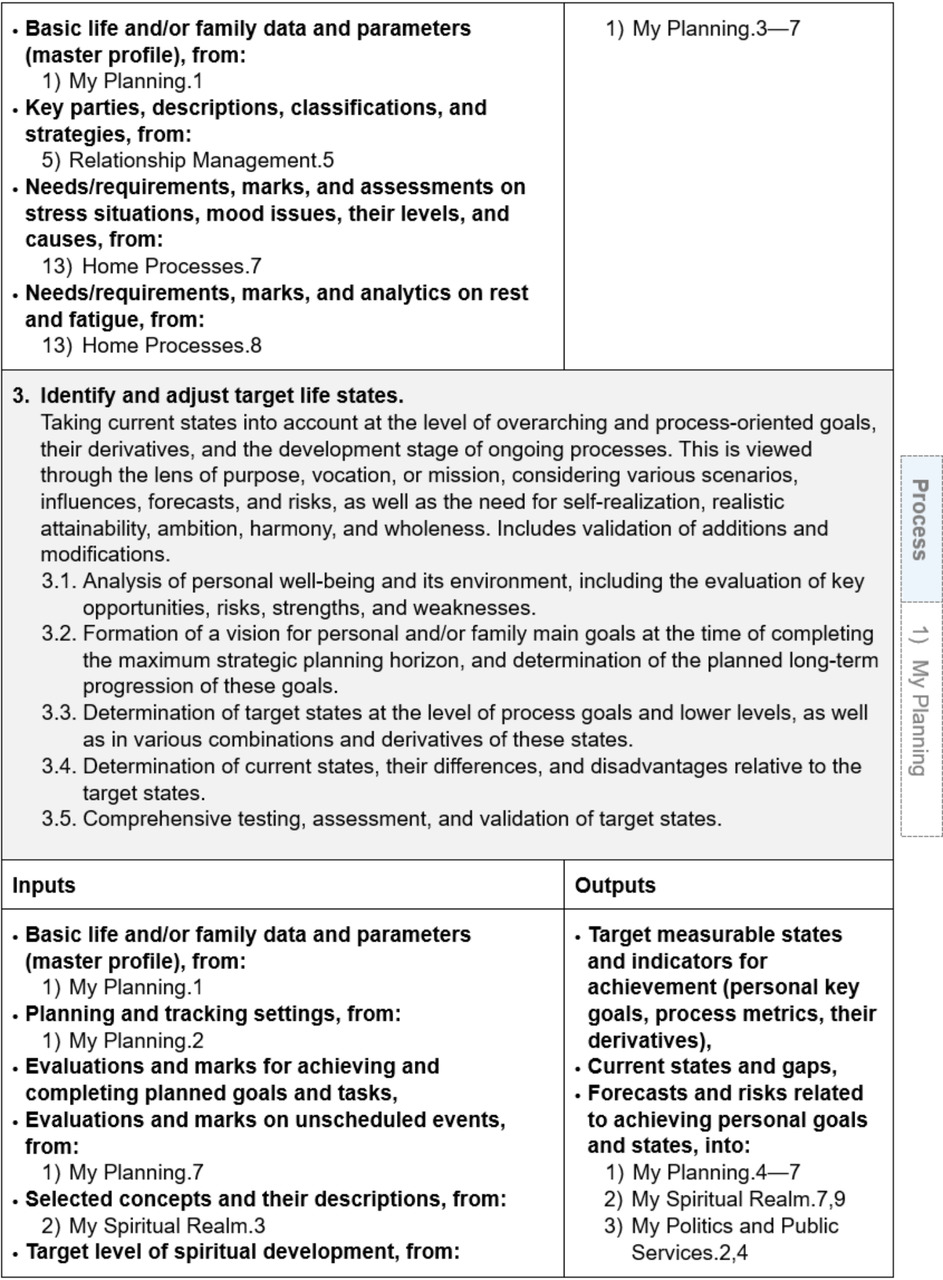
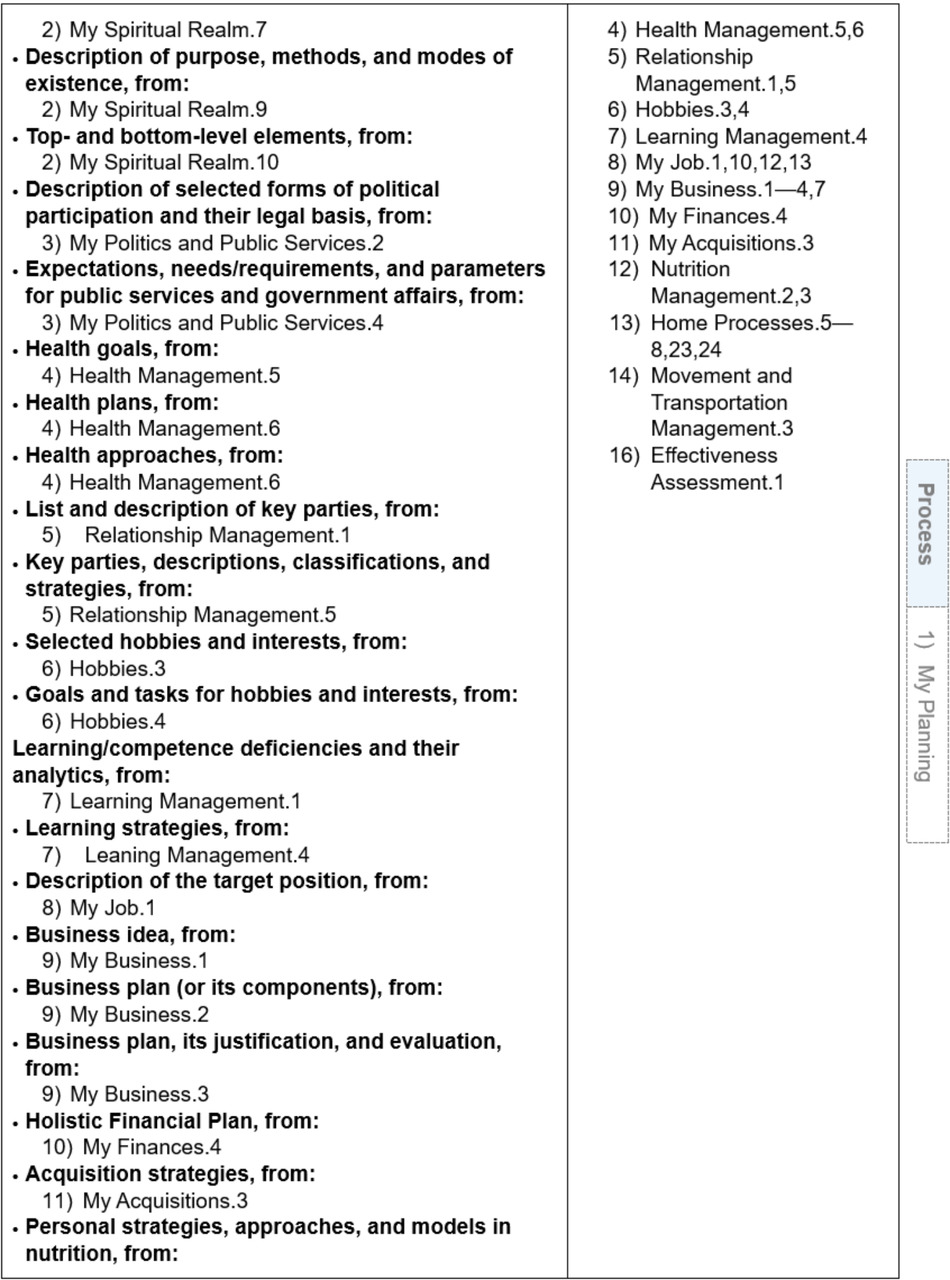
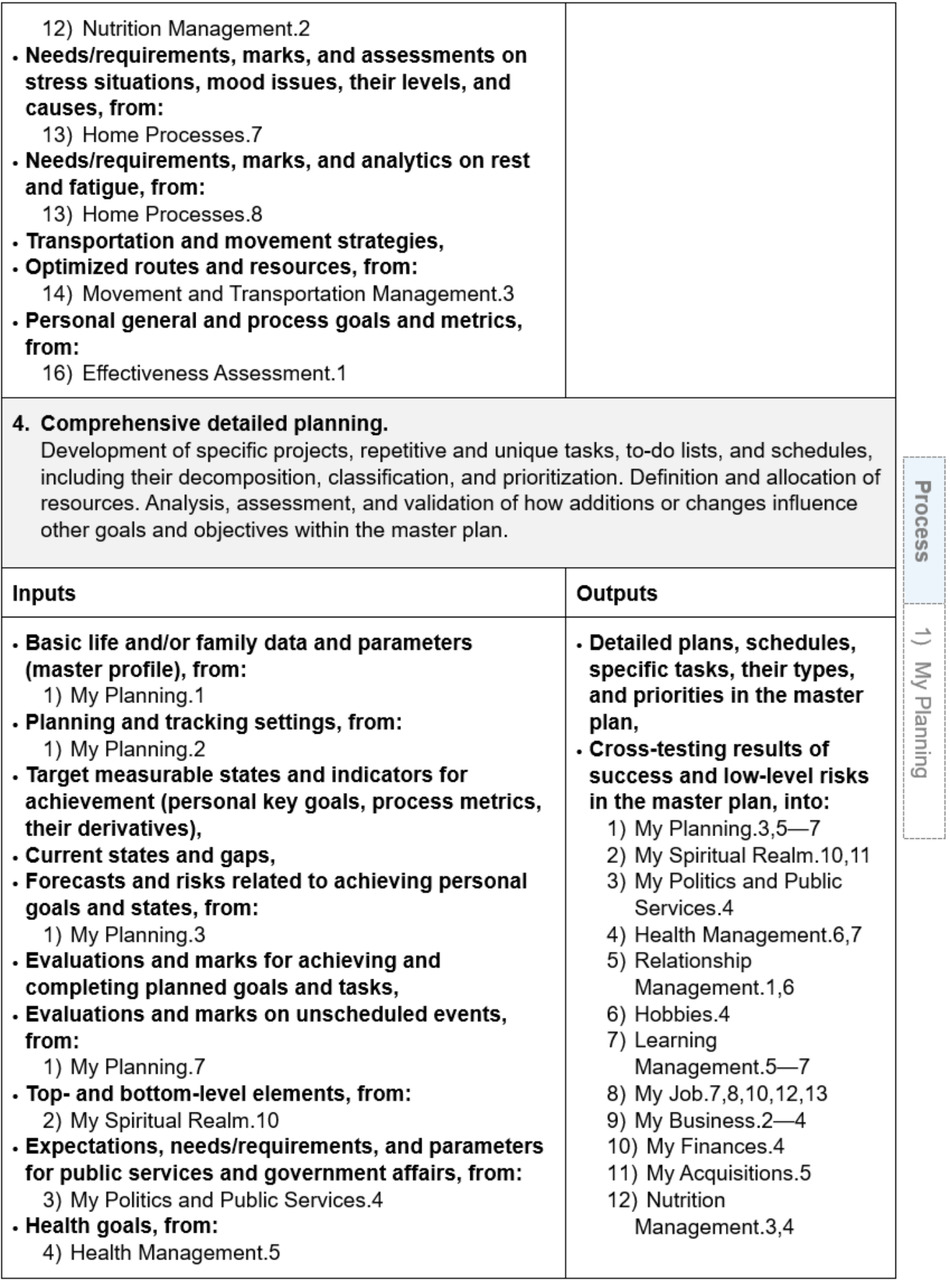

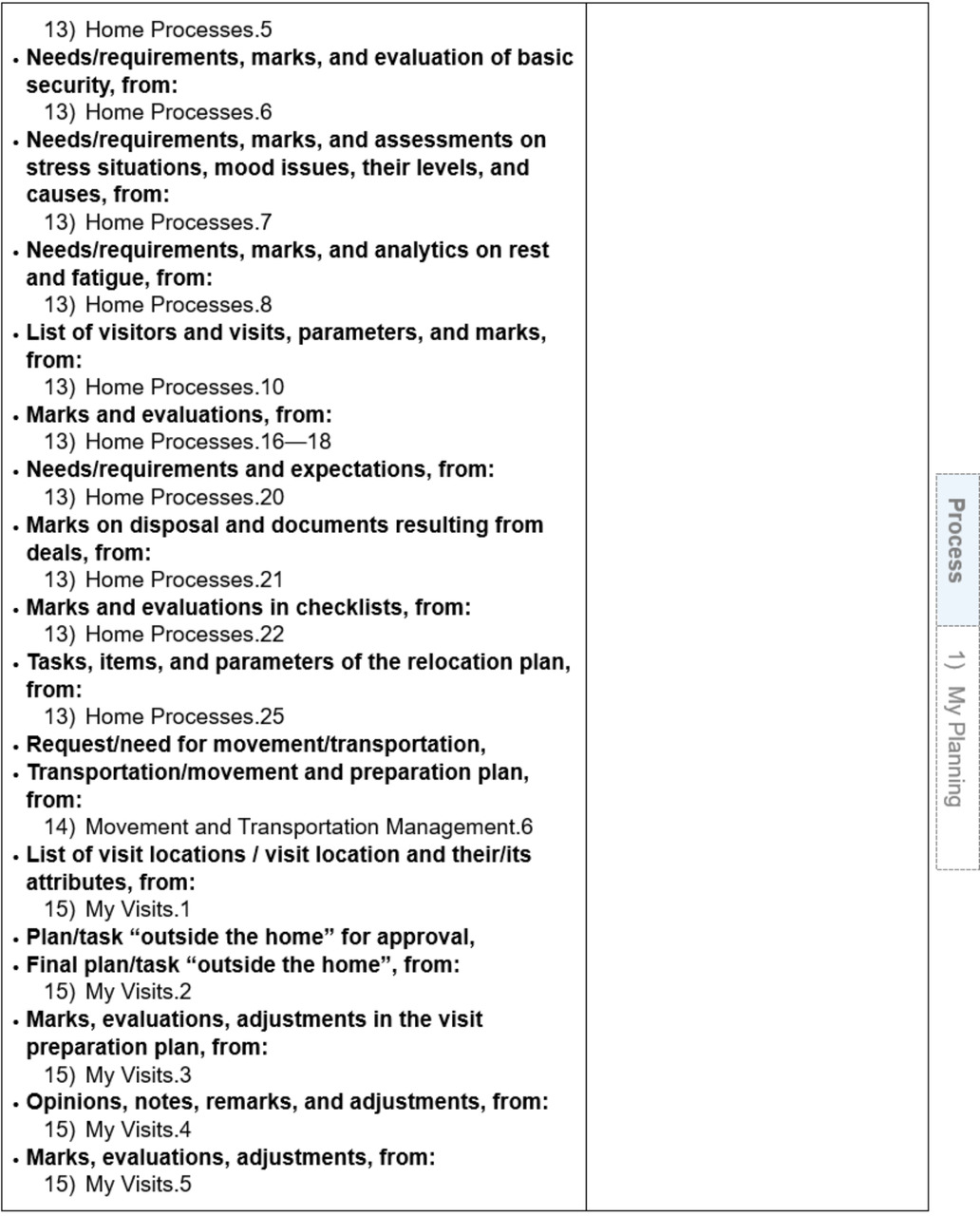
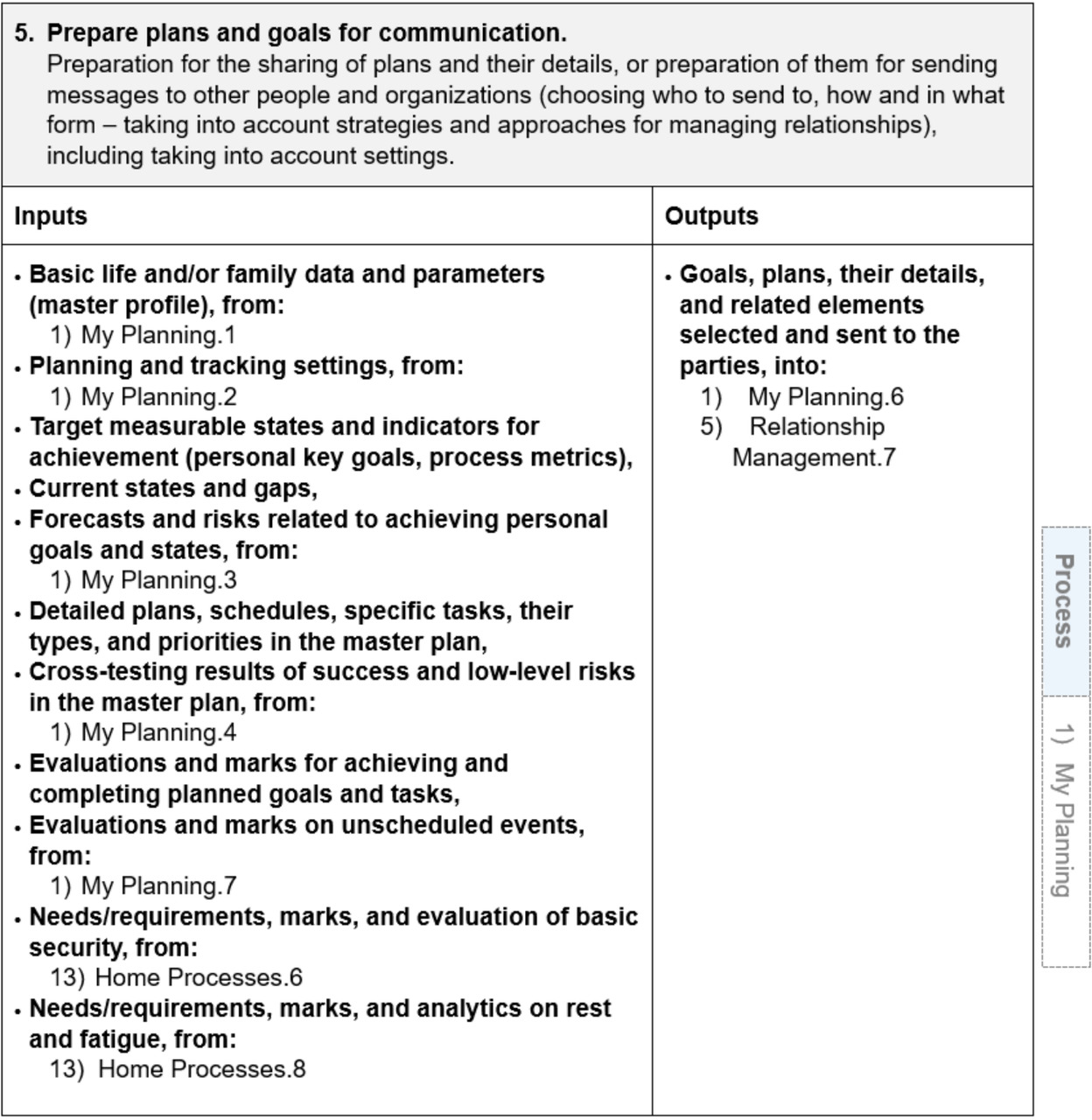
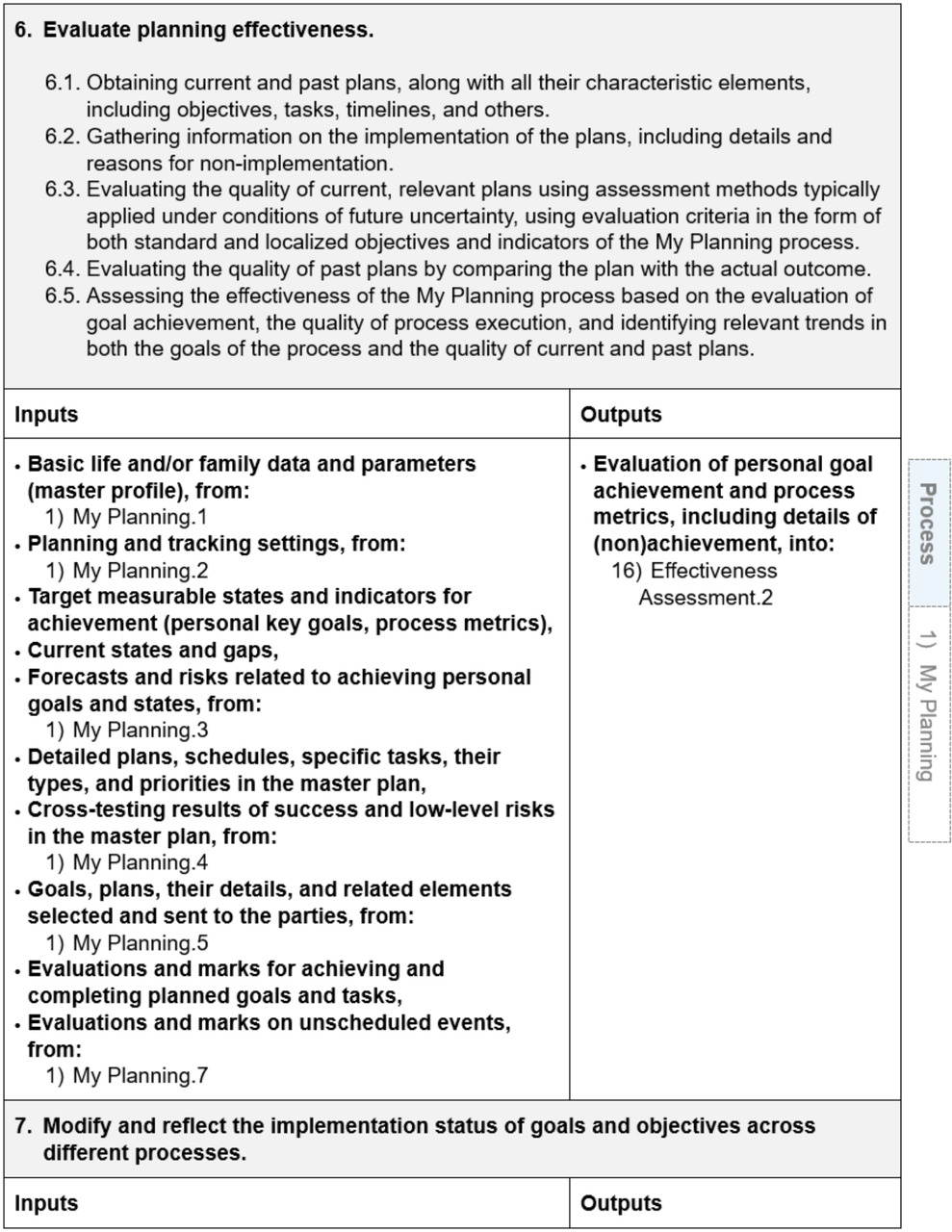
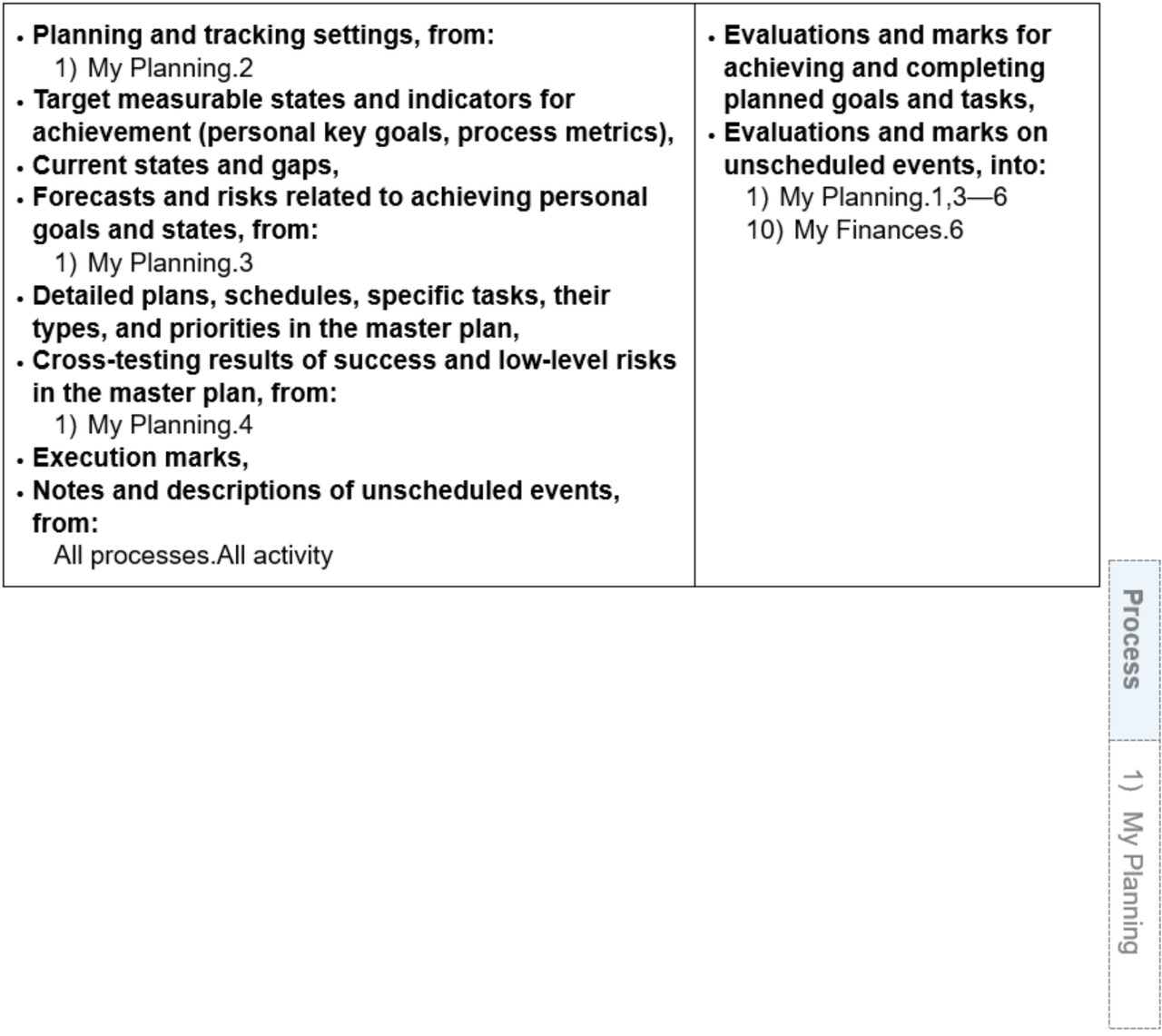
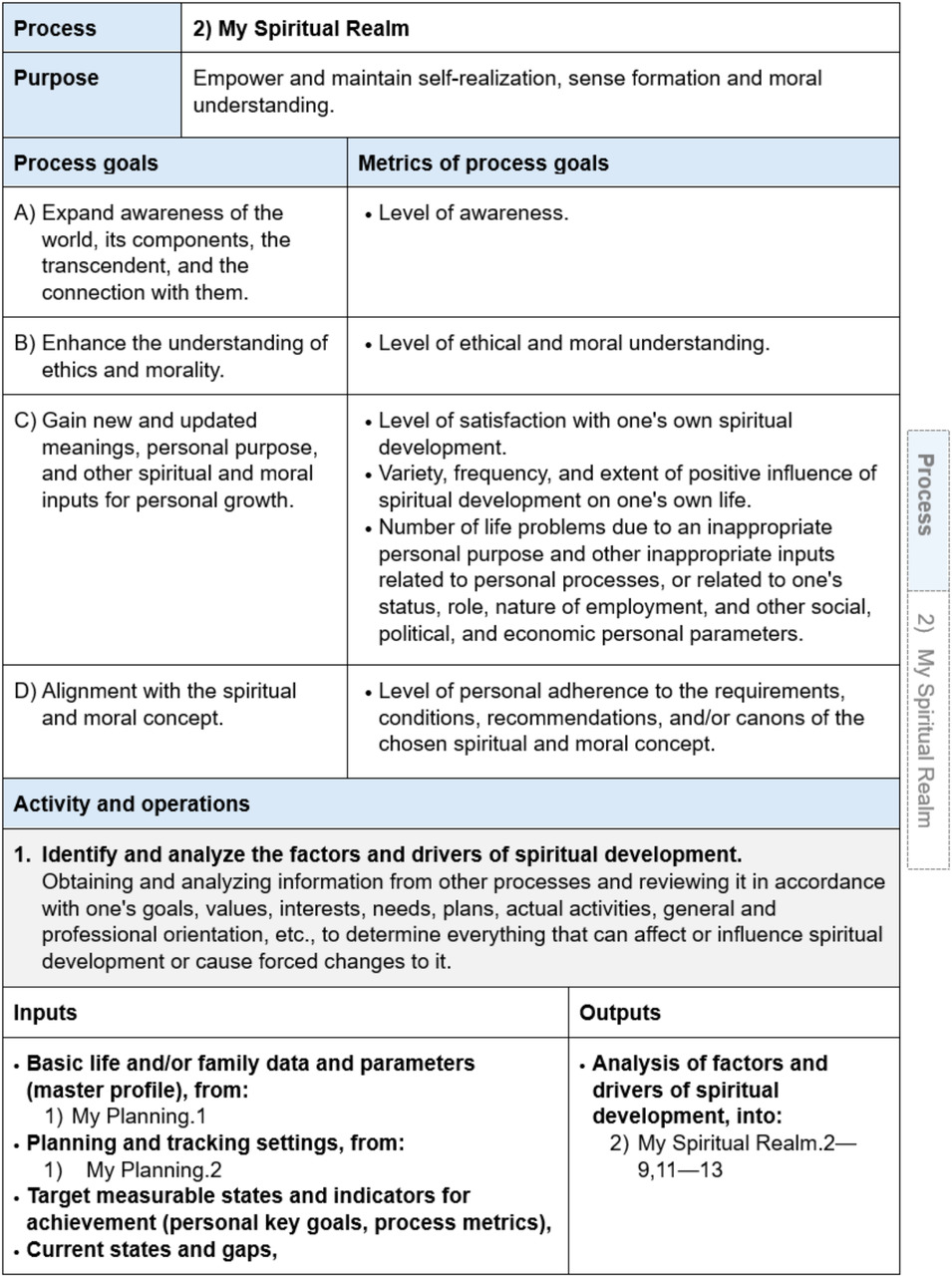
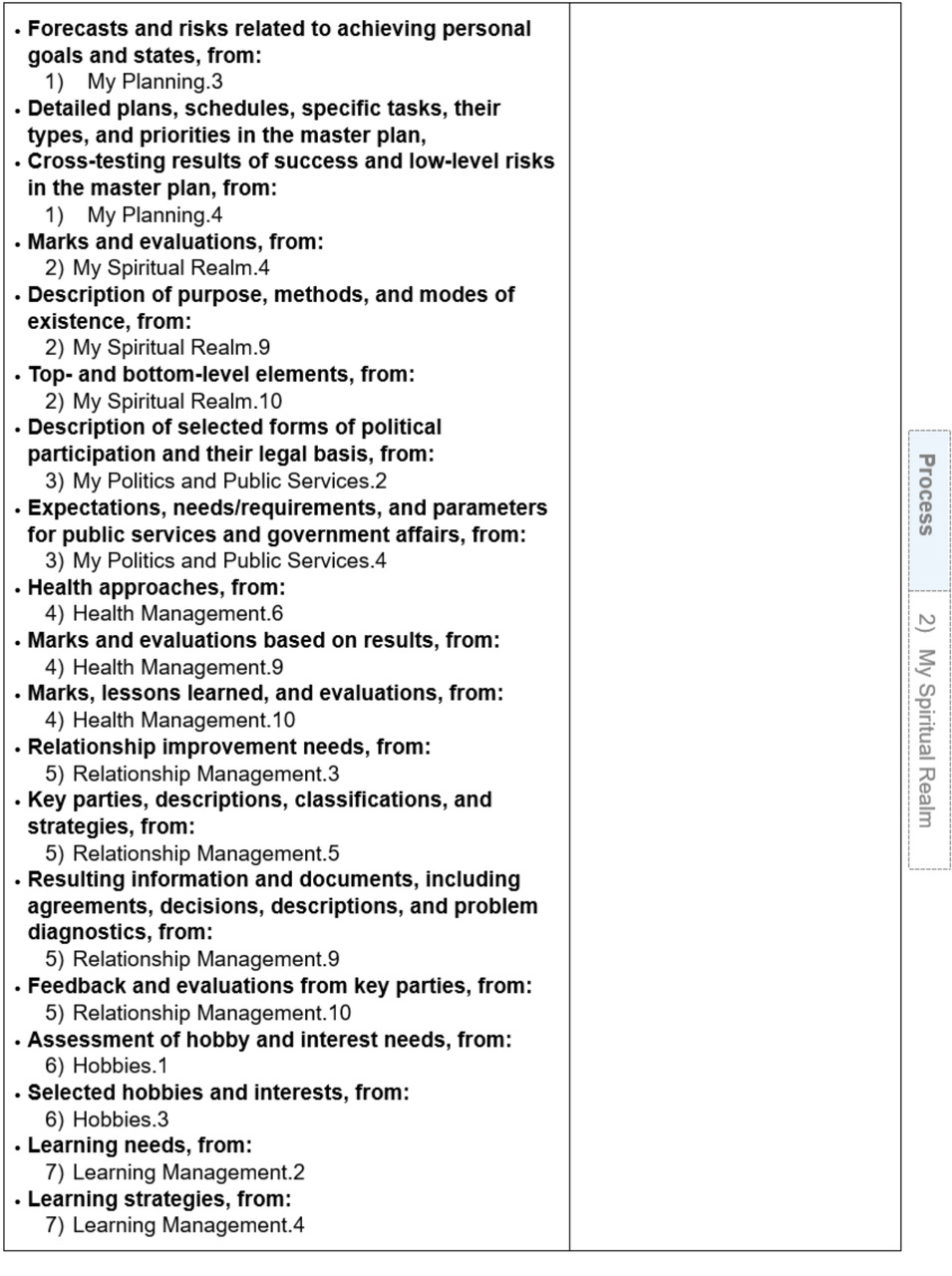
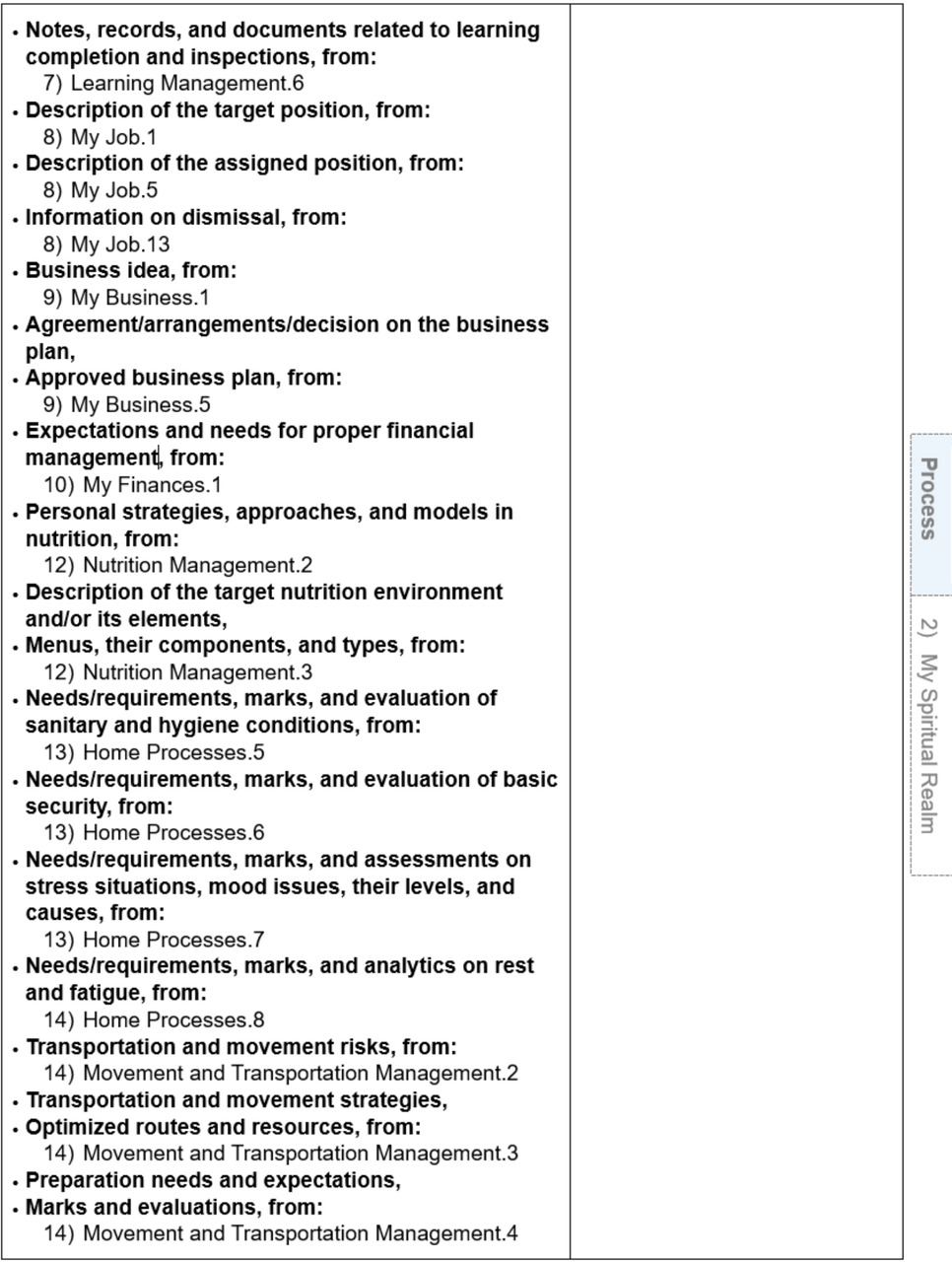
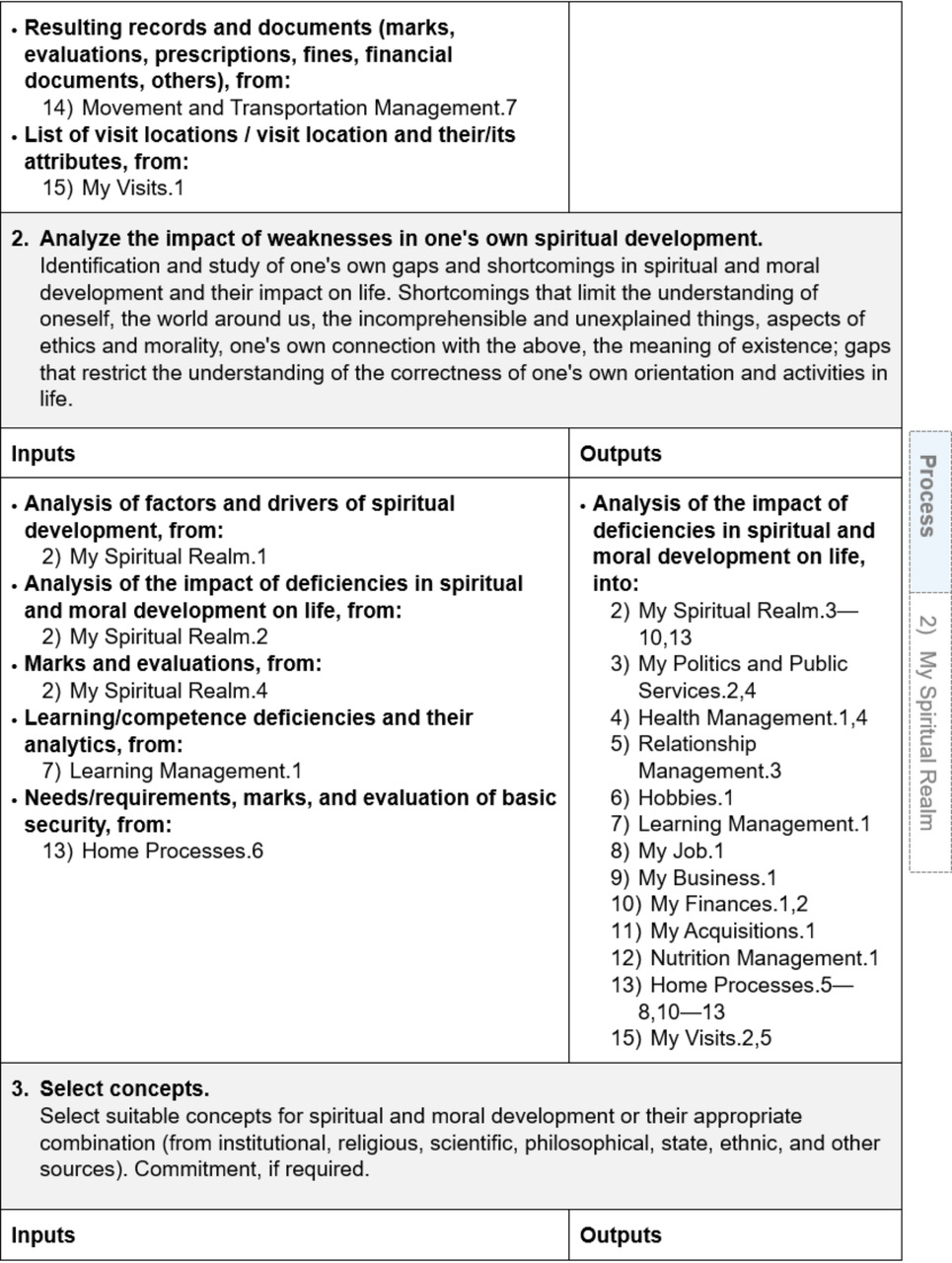

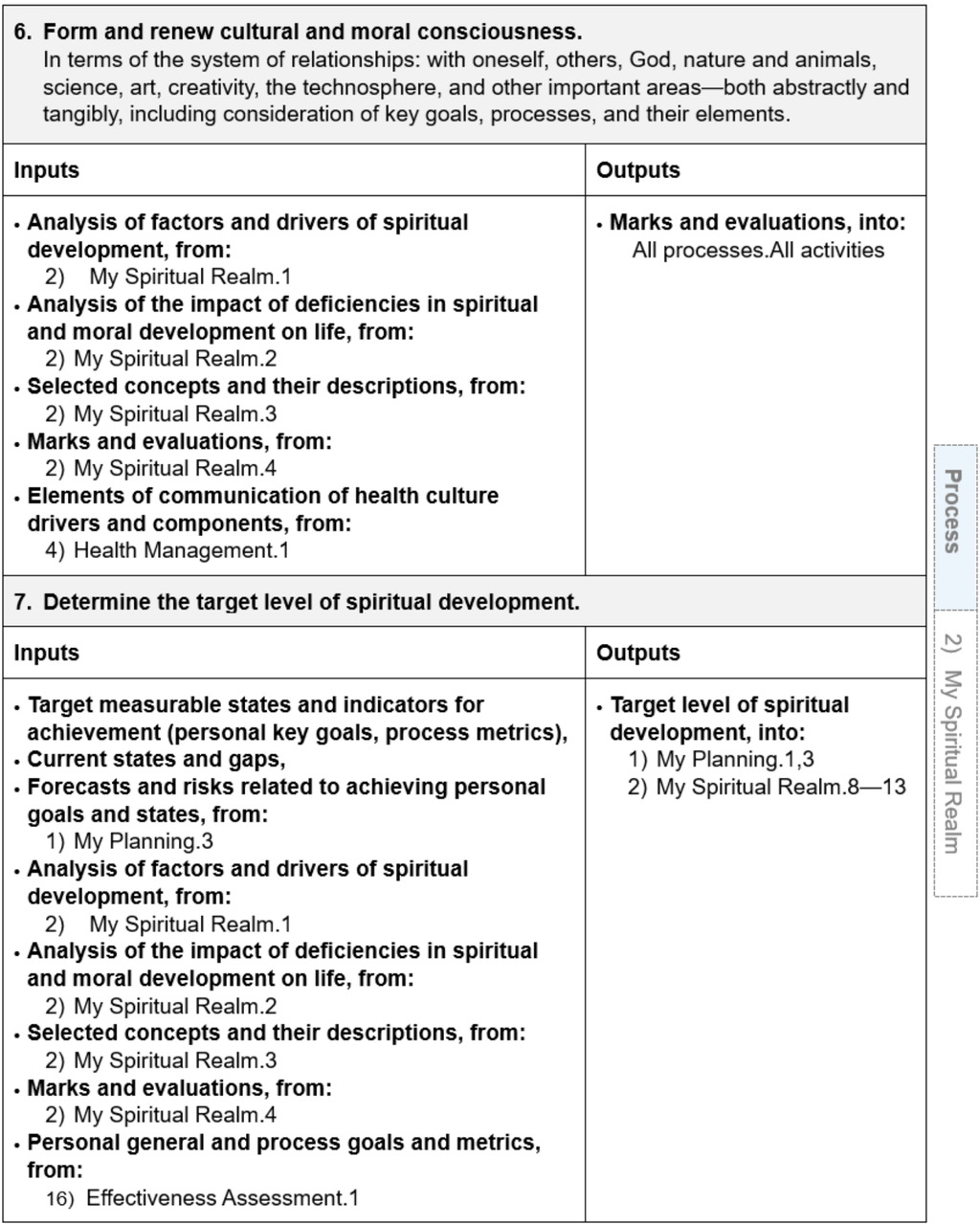
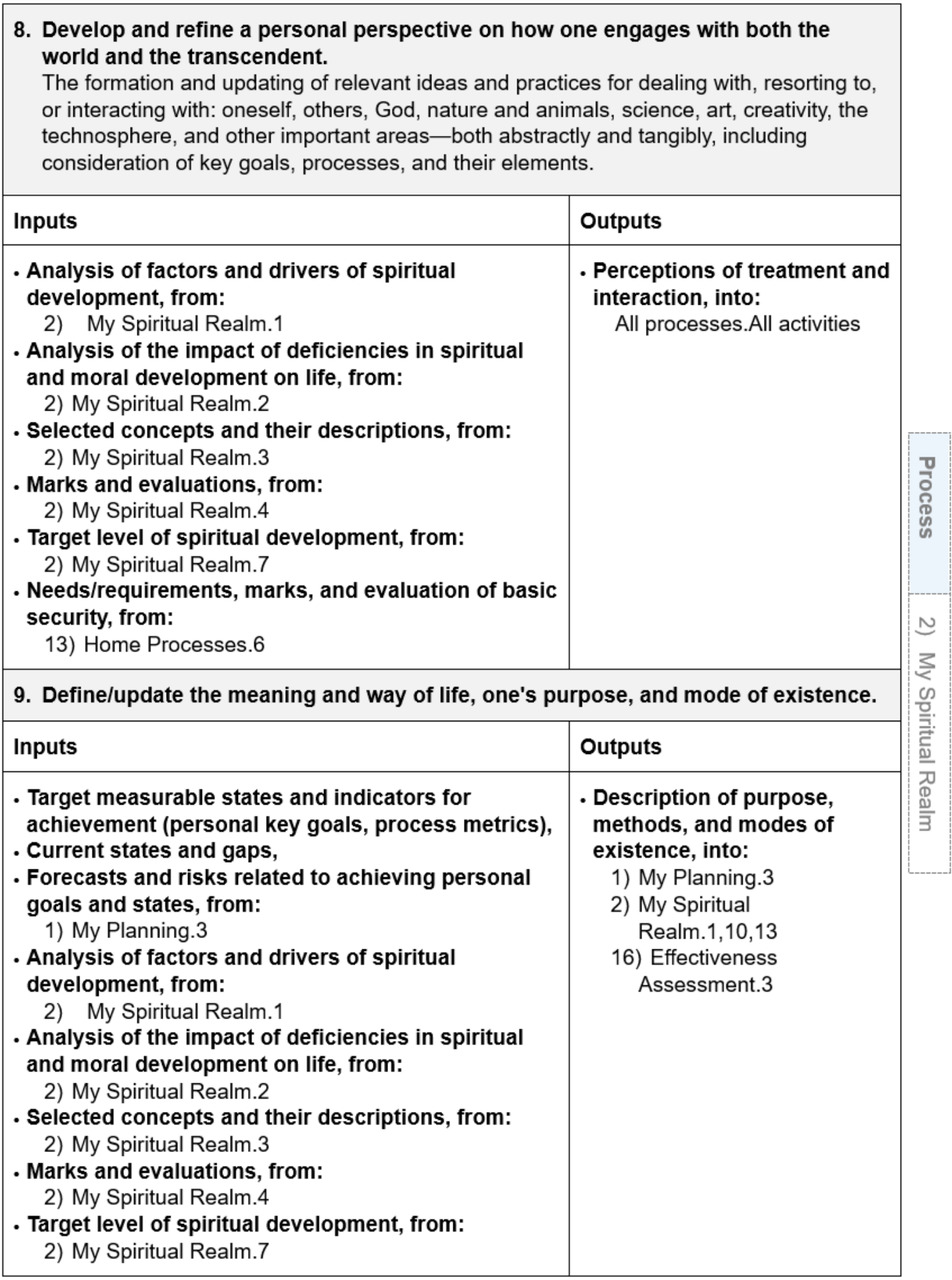
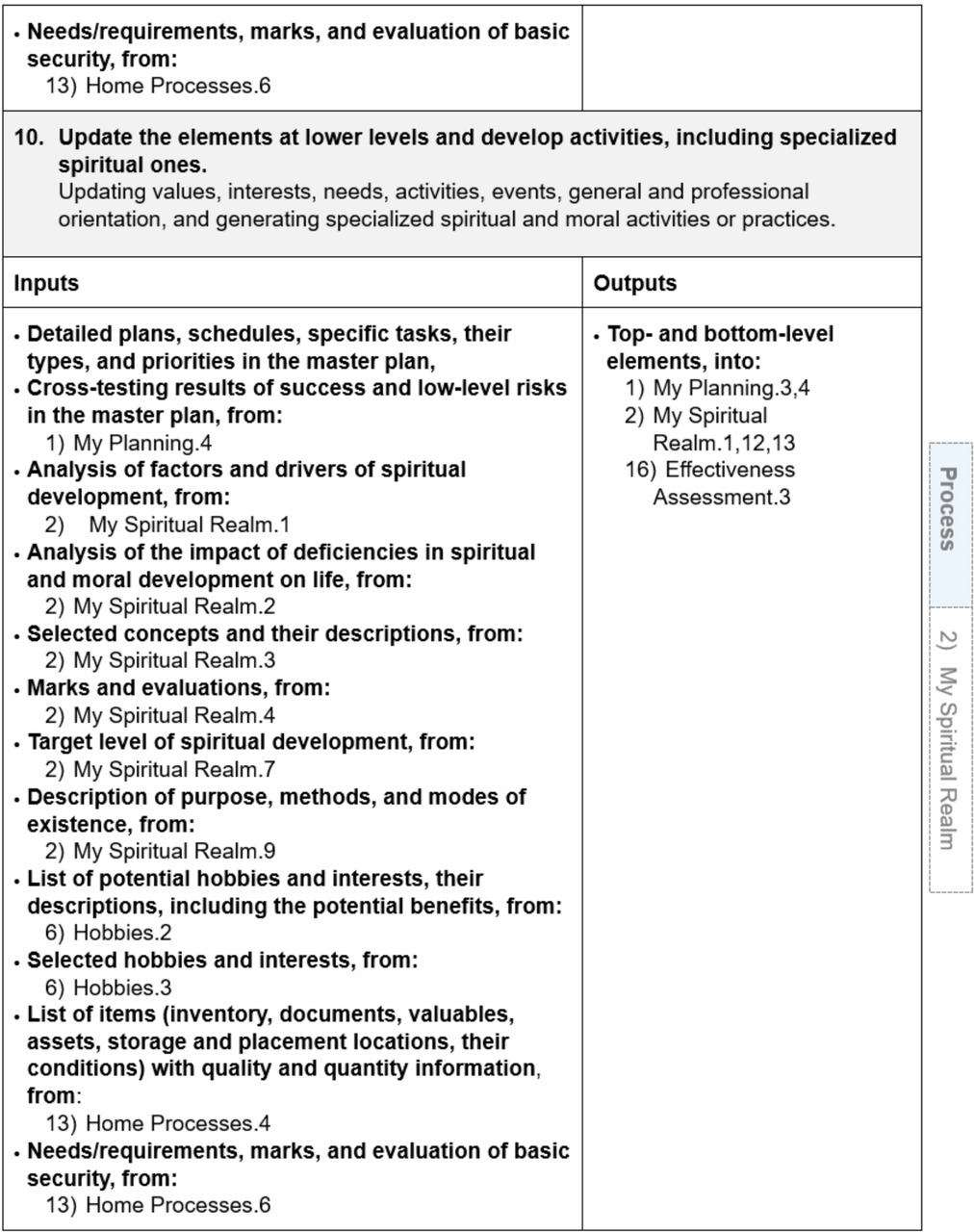
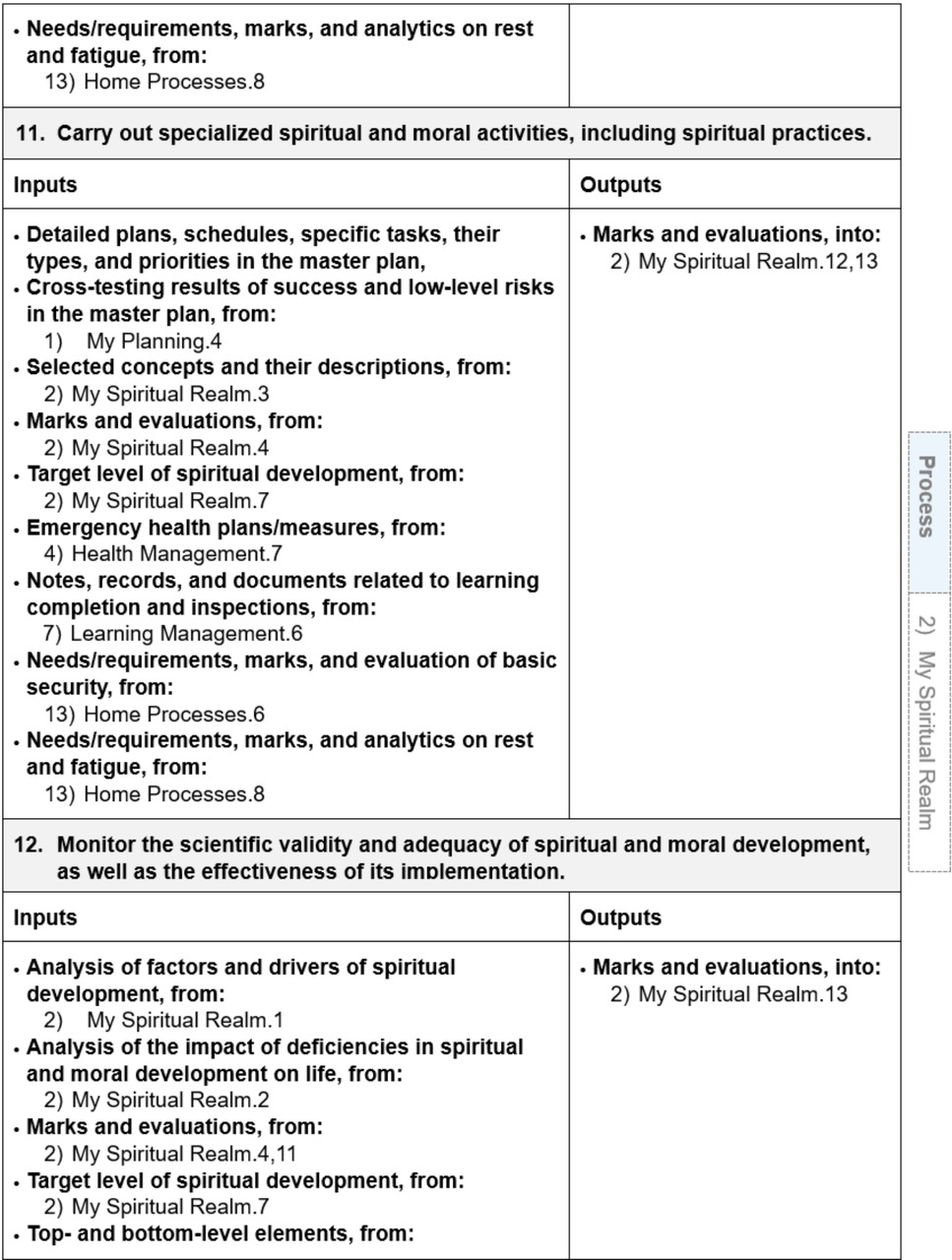
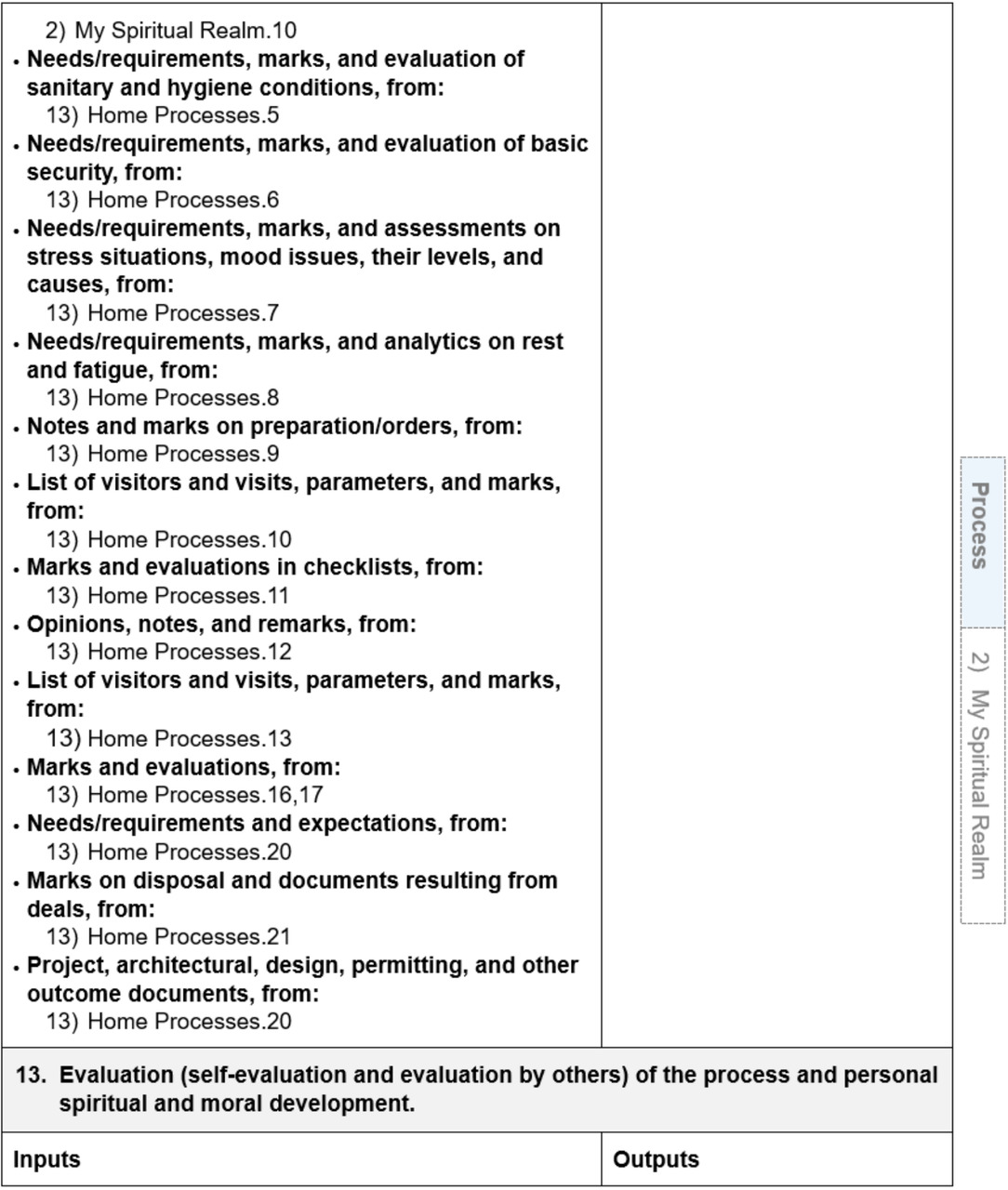
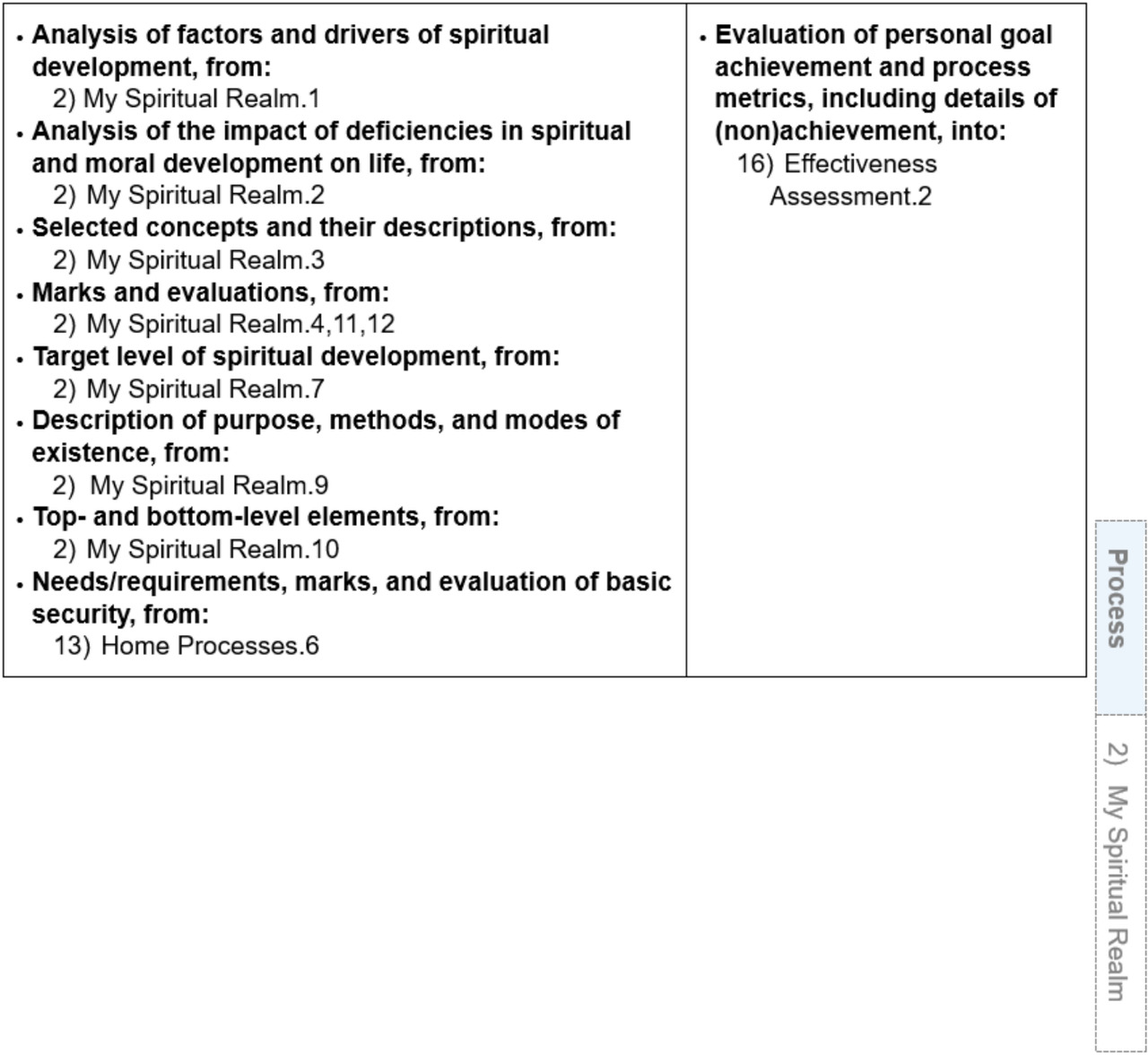

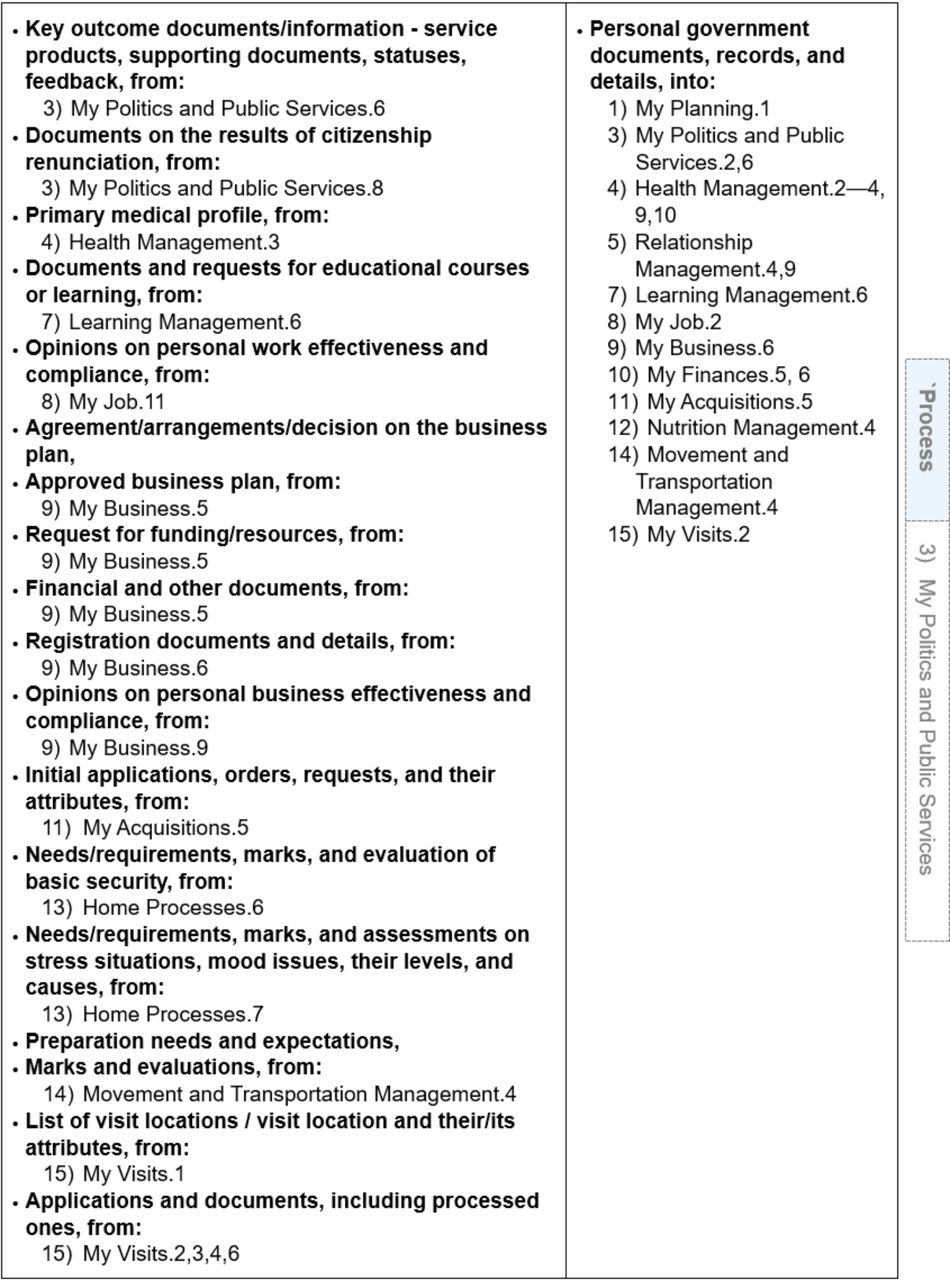
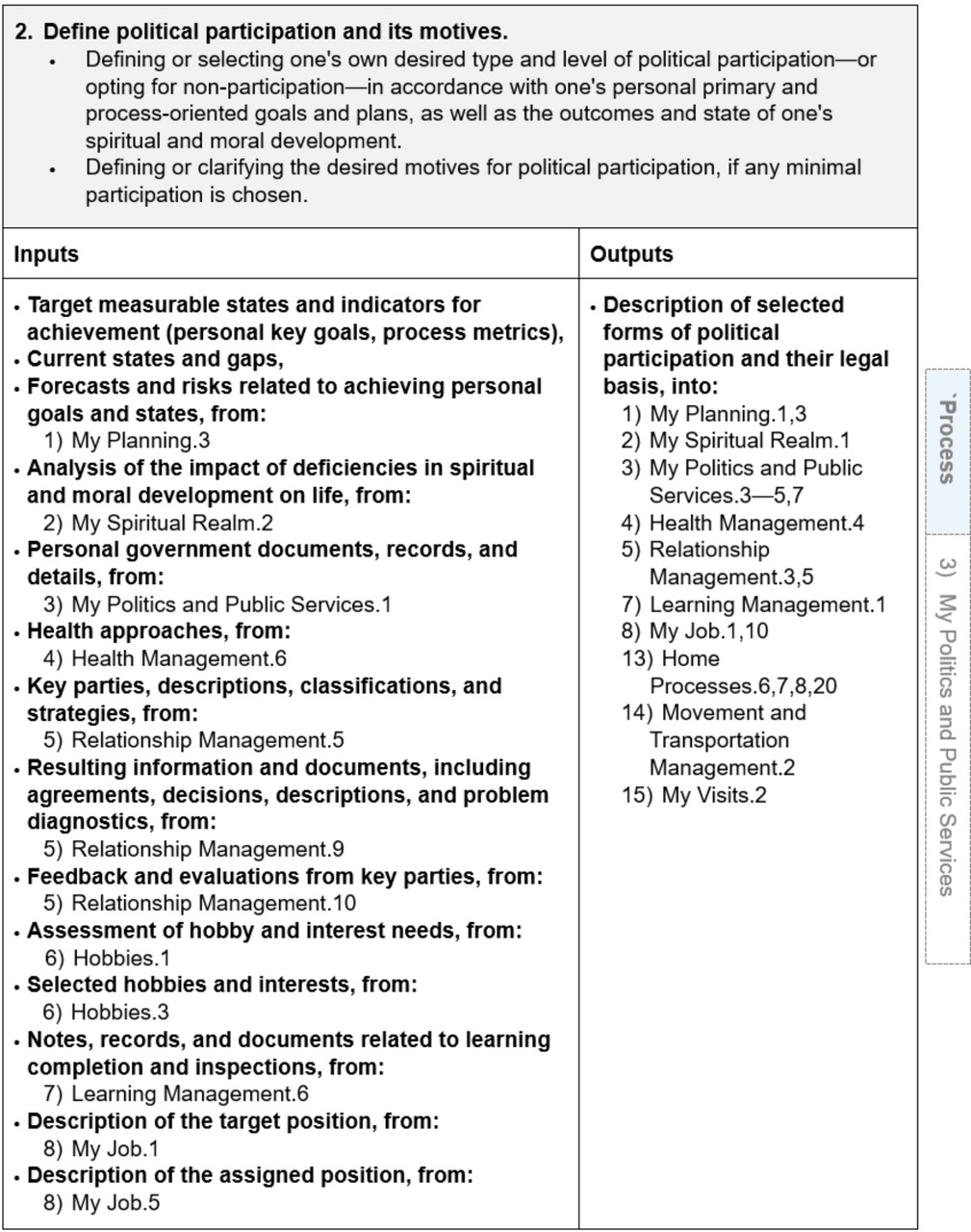
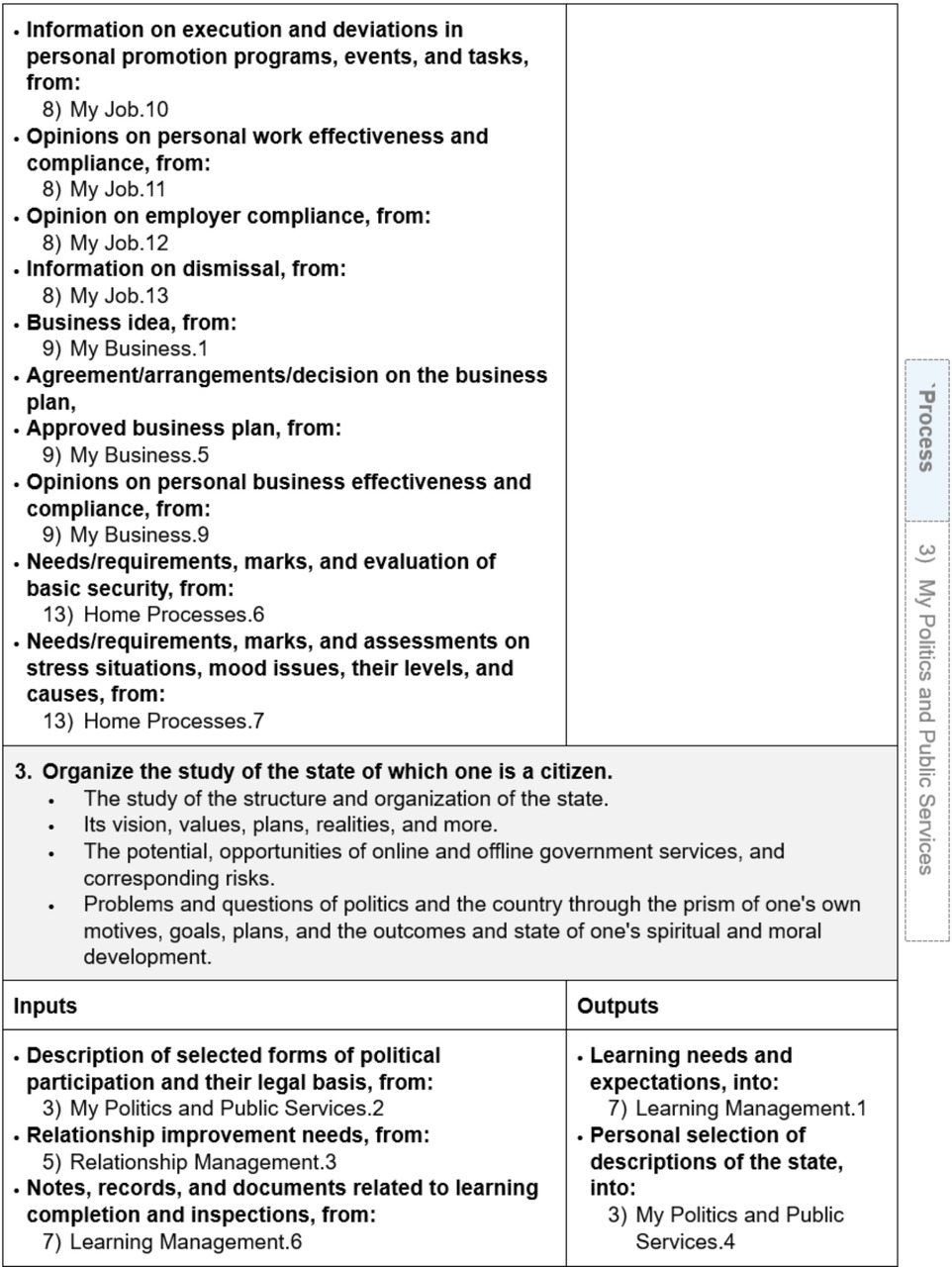
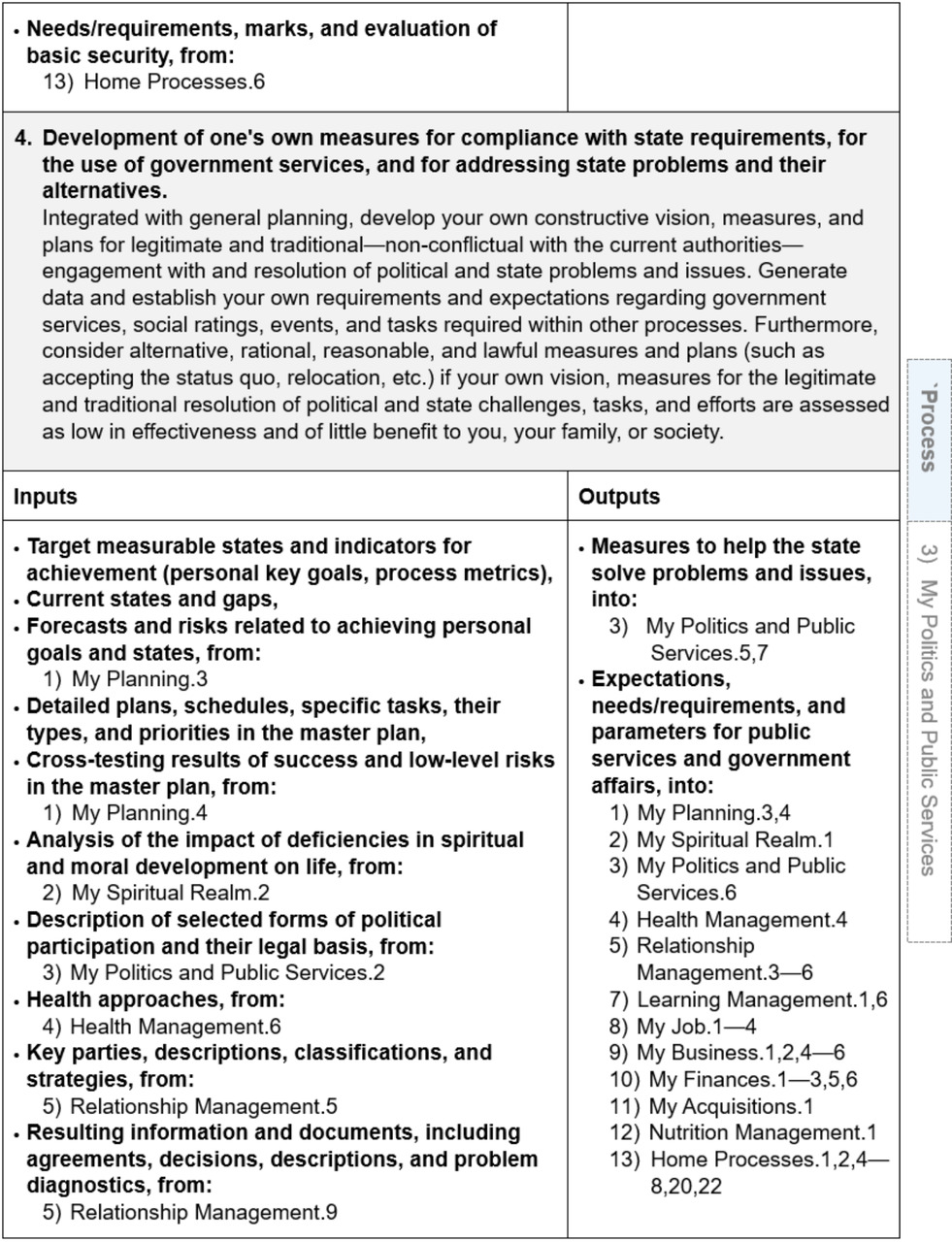
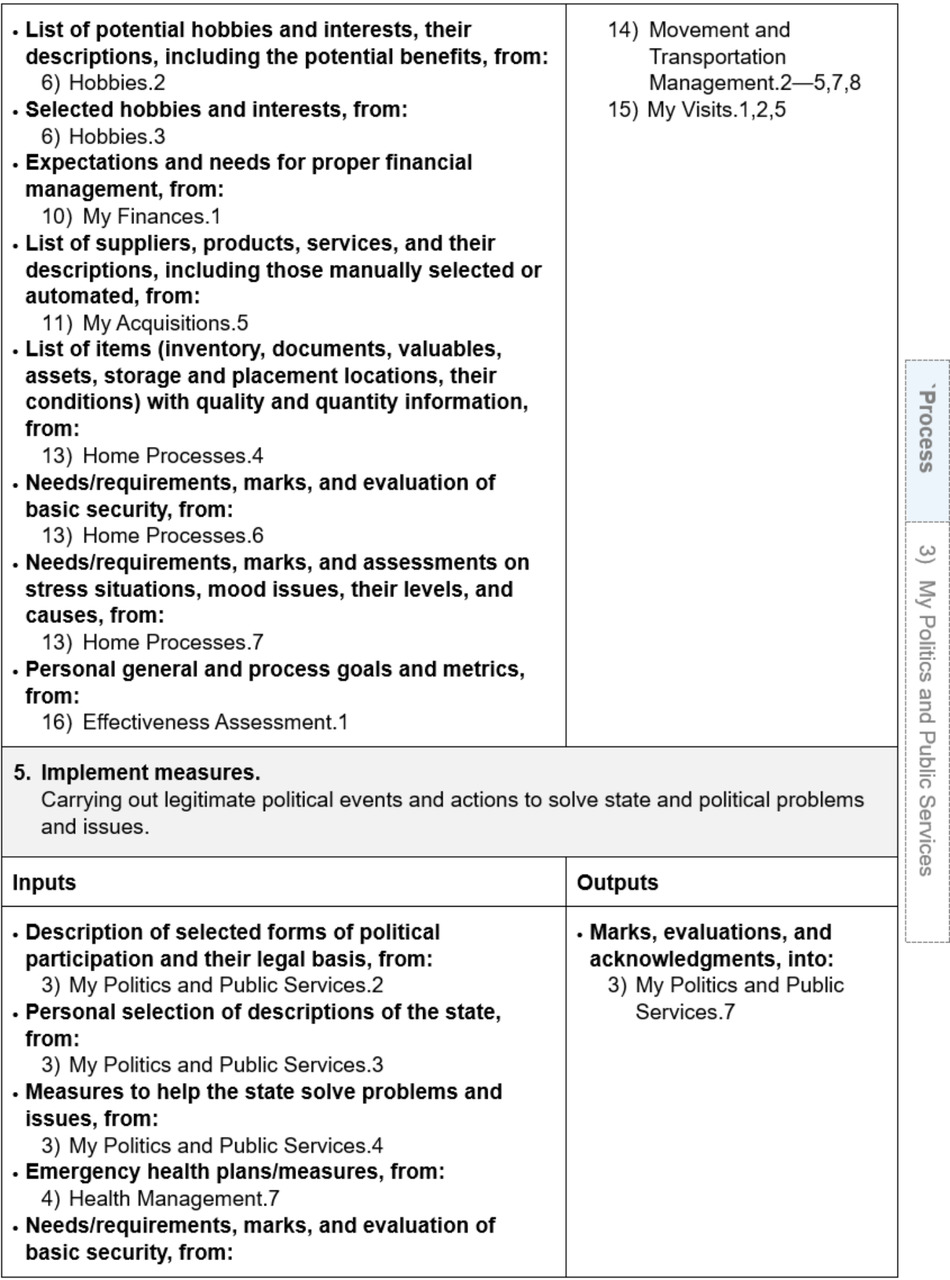
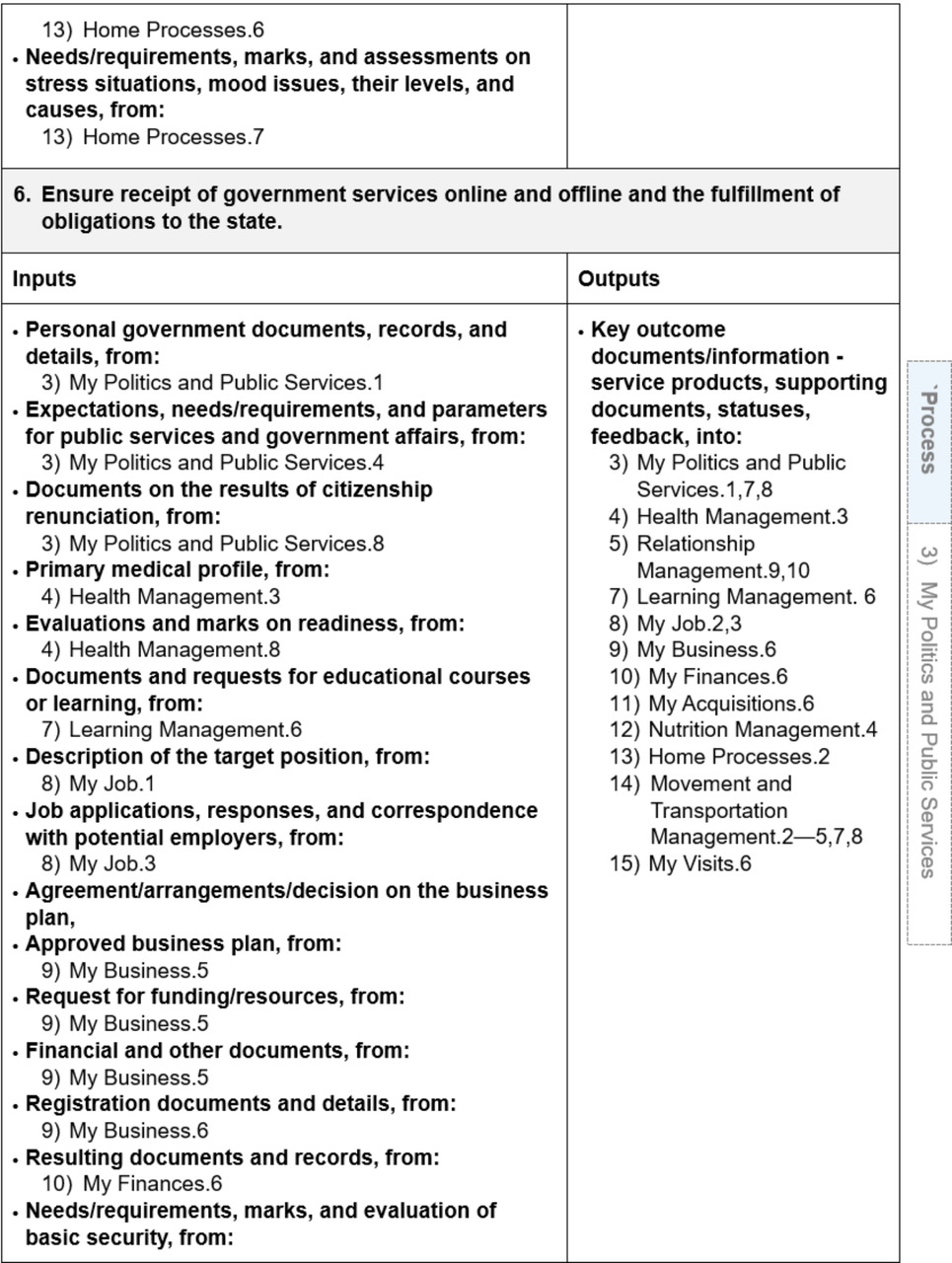


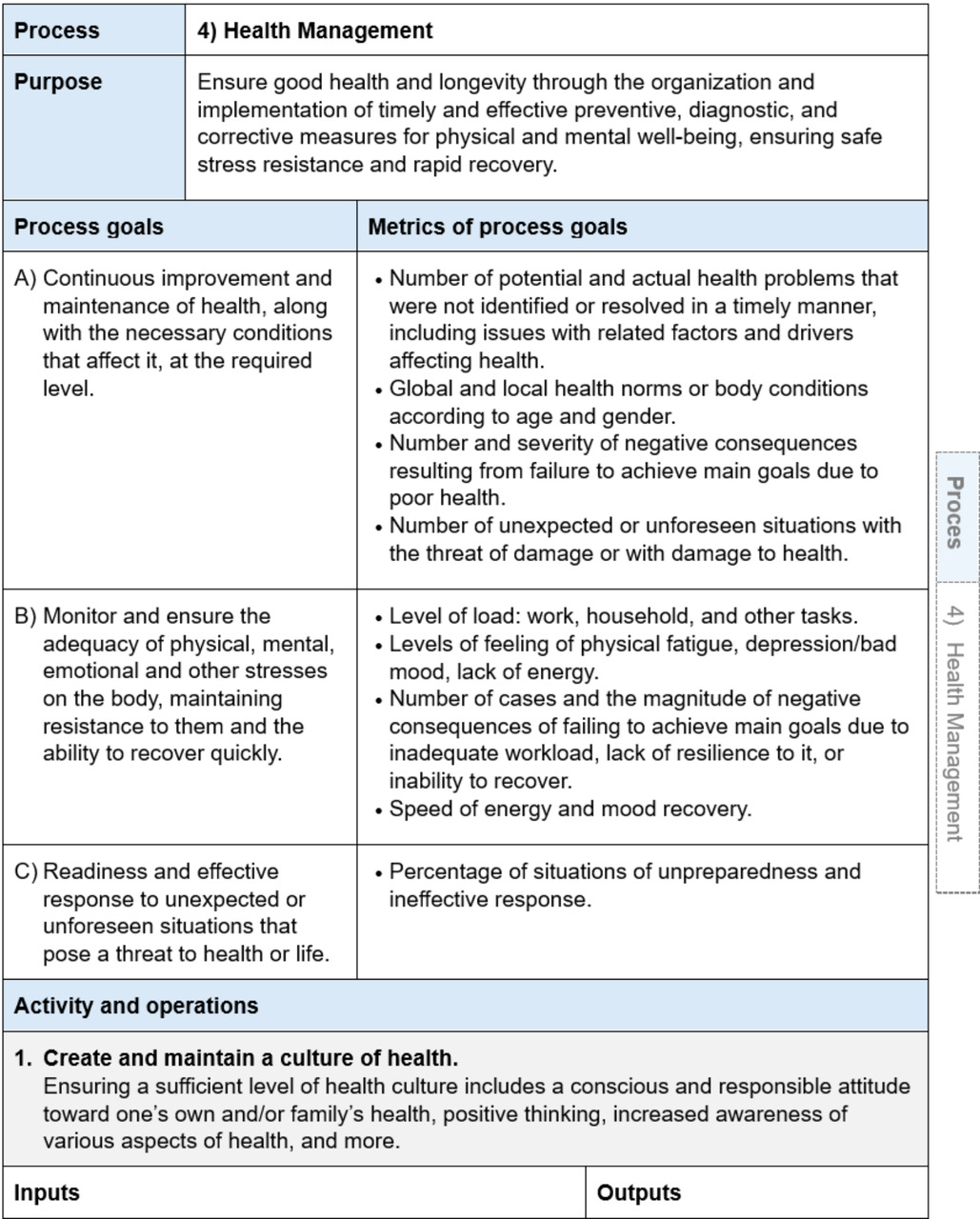
Бесплатный фрагмент закончился.
Купите книгу, чтобы продолжить чтение.